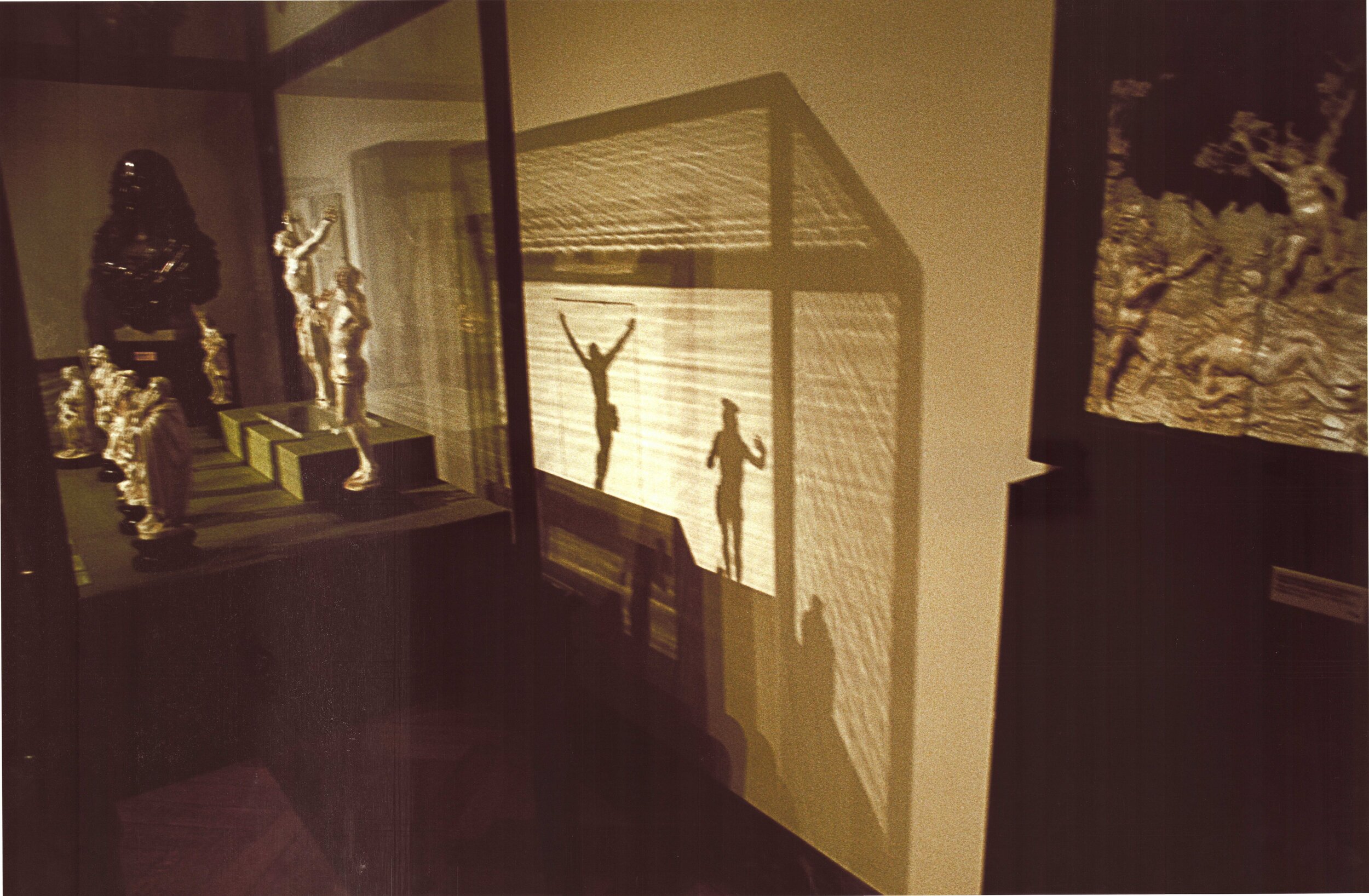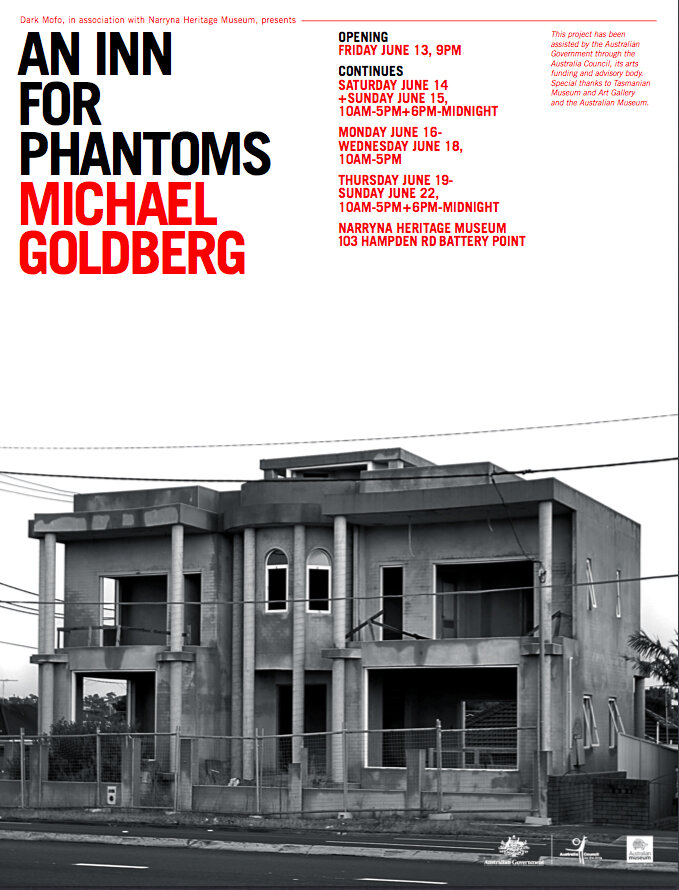Narryna’s Contemporary Art Program
Narryna’s polite Georgian architecture typifies our view of colonial era Tasmania. Its academic classicism reflects the colonists’ shaping and controlling their environment. Associated with the development of Battery Point and Salamanca Place in the early 1830s, Narryna, is an outcome of Lieutenant-Governor Arthur’s vision for Hobart. Its landmark qualities led to Narryna being established as a museum in 1955. Be it ever so visually appealing Georgian architecture (with its hierarchies of scale and decoration and internal social ordering) embodies the power dynamics critiqued by artists and commentators on the colonial legacy.
Narryna has adopted a programming model, aiming to make the museum as much a ‘doing’ as ‘viewing’ experience. Narryna has invited contemporary artists to work with aspects of the building, collection and themes from Tasmania’s past. Narryna offers gallery spaces for artists work, but more significantly interiors and grounds with architectural frameworks and significant art and cultural history collections for contemporary art interventions. Art interventions work well in historic houses through the opposition of 19th century and contemporary aesthetics.
Commissioning contemporary works / interventions engenders dialogue between past and present. Contemporary artists can often say things that curators working in academic or materials-based disciplines do not. As the saying goes, ‘Museums safe places for dangerous ideas.’
Narryna has a sense of culture (as in Europe) as a shared discourse that contributes meaning and identity. Narryna aims to redefine what historic places are about – as much about the present as the past; a forum for ideas rather than static displays; interpretation by artists as much as by curators. To quote indigenous artist, Tony Albert “The past is not passed” and Narryna sees its contemporary art program as contributing to a new inclusive Australian identity.
Narryna’s contemporary art program is generally presented as part of Dark MOFO, the MONA (Museum of Old and New Art) Winter solstice festival. The MONA brand is a larrikin, egalitarian immersion in art where people can take from it what they choose. It is anti-‘art speak’. It is about shared human values and shared experiences. Its mix of art, music, performance, food and drink and graphic identity is intended to appeal to all of the senses. Narryna is happy to be associated with the MONA brand. These are Narryna’s major contemporary art programs since 2014:
2014: Dr Michael Goldberg: An Inn for Phantoms
Artist and academic, Dr Michael Goldberg’s An Inn for Phantoms explored themes of light and shadow and historic buildings as palimpsests with former royal palaces turned into museums, just as the modest merchant’s house, Narryna became a museum in the 1950s. At the Kunsthistorichesmuseum, Vienna, Goldberg’s lens captured high light levels on Baroque ivory carvings leading to silhouettes on the gallery’s damask walls, shadow play that with time (and light damage) will be a layer of the palimpsest.
In June 2014, Goldberg spoke to Kane Young of the Hobart Mercury Sunday Tasmanian,
‘South African-born, Sydney-based artist Michael Goldberg has transformed the stately colonial building into An Inn for Phantoms using photographs, video and the museum’s own historic displays to create an installation that questions the role our imagination plays in how we experience art.
Each artwork casts its own mysterious shadow which Goldberg often finds more fascinating than the works themselves. As darkness falls the shadows move and change, challenging the relationship between light and space and ensuring that no two visitors’ experiences will be exactly the same.
‘During the day we close all of the blinds so it is its own enclosed entity, slightly claustrophobic and strange’, Goldberg explained.
‘At night we lift the blinds so the light and images go into the street and draw people in – the inside gravitates outwards’.
‘I want people to come away with their own ideas and fantasies about what the exhibition might be about. Everyone who walks in will have their own interpretation.’
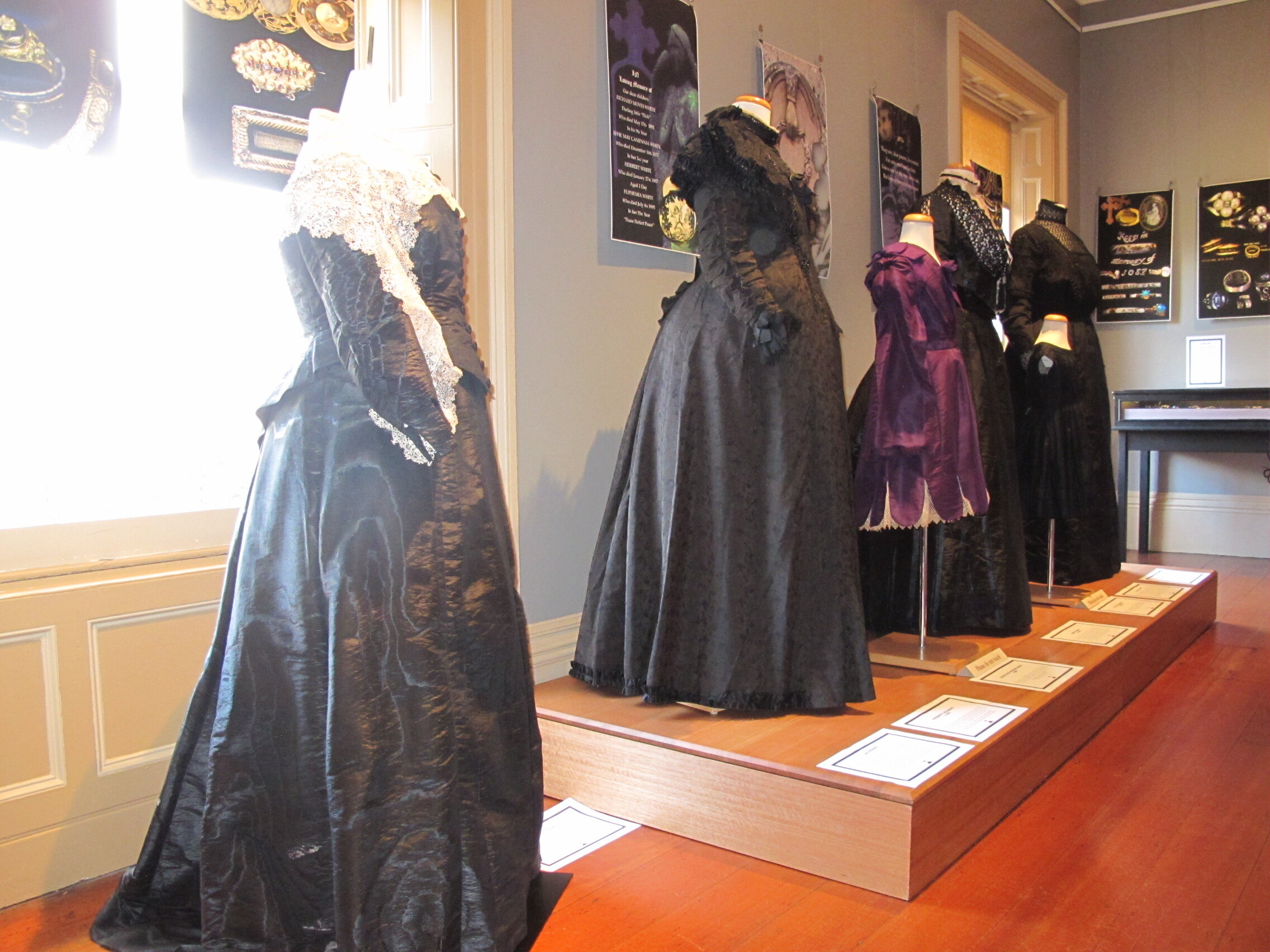
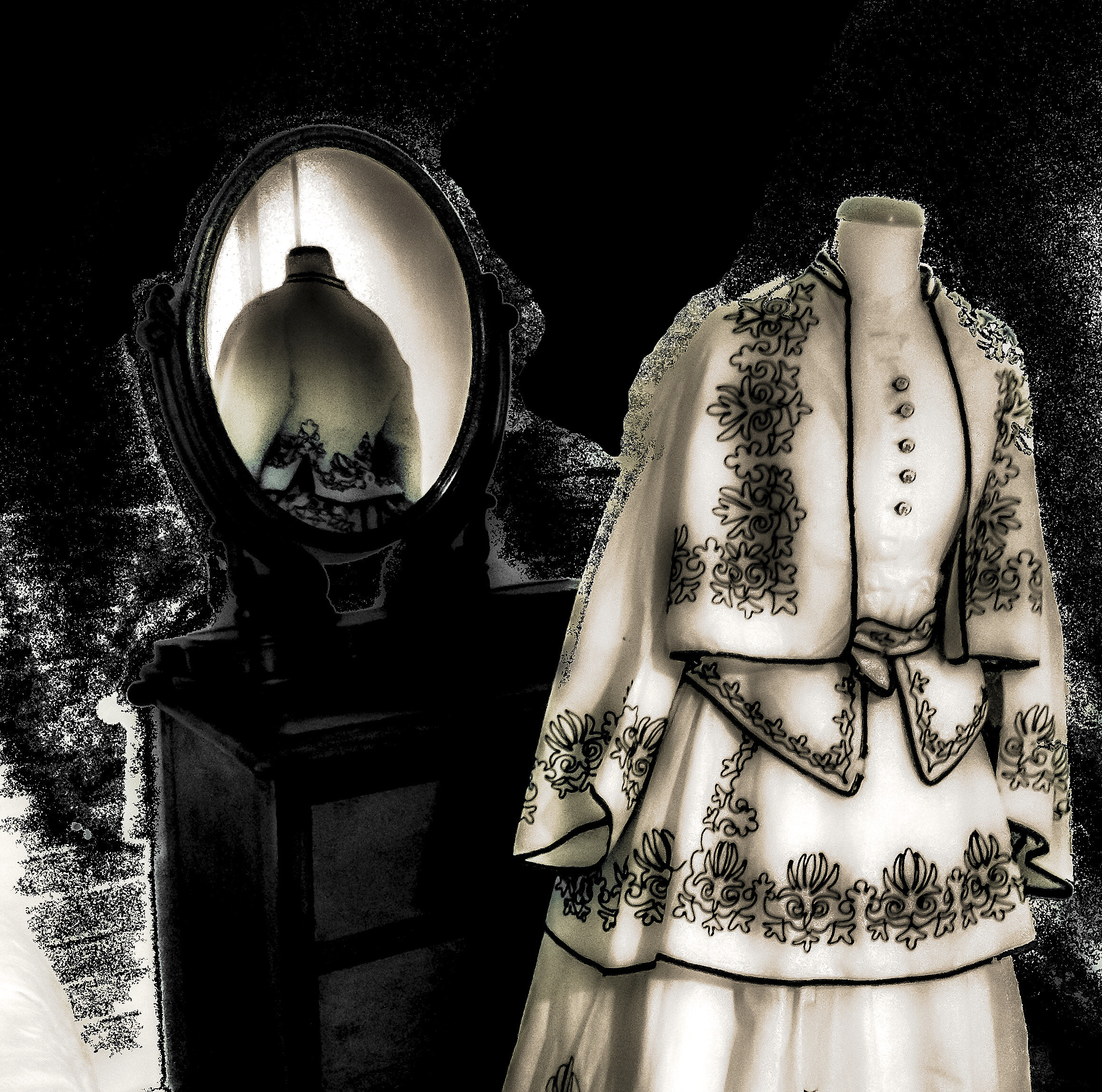
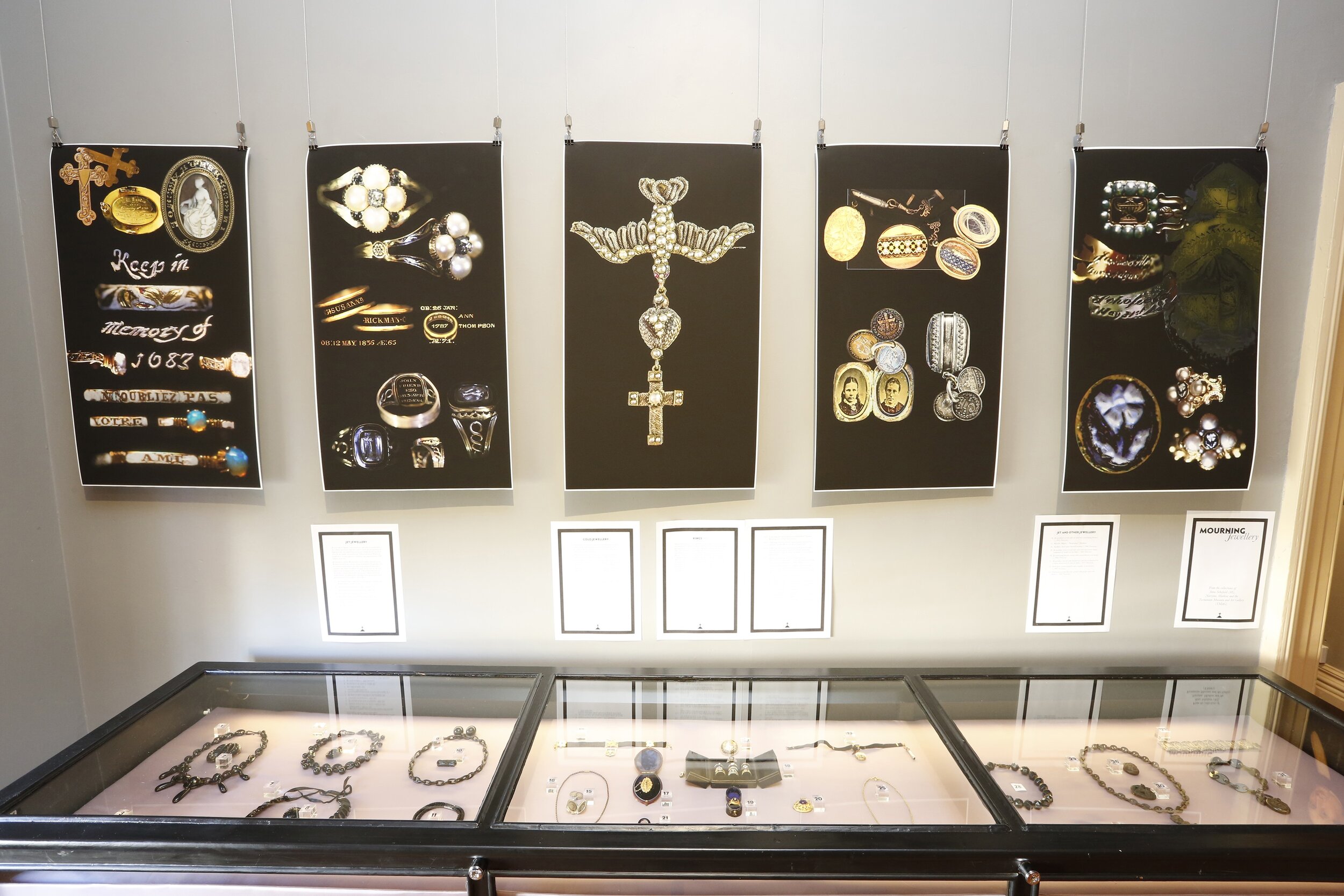
2015 LANA NELSON & SCOTT CARLIN: ASHES TO ASHES
Ashes to Ashes combined an historical exhibition on Georgian and Victorian attitudes to death with public engagement experiences that allowed visitors to engage imaginatively with the exhibition’s subject matter, be part of art creation, have fun and interact with each other onsite and through social media.
MONA has long flirted with themes of sex and death. Narryna’s 19th century collections reflect a time of high mortality and risk of sudden, violent death through conflict, shipwreck, sickness and ‘acts of God’. Georgians and Victorians created elaborate rituals and a rich symbolism that gave expression to grief, loss and anxiety about the afterlife.
Ashes to Ashes featured Narryna’s collection of mourning costume and jewellery. Victorian mourning jewellery typically contained mementi mori, relics of the deceased. Ashes to Ashes featured a collection of necklaces, brooches, earrings and bracelets made completely of human hair, which was popular before the advent of photography in 1839. The Victorian widow was expected to wear full mourning – non-reflective black bombazine or crape for 2 ½ years, transitioning to public life through purple or mauve. Queen Victoria set the fashion for extended mourning, remaining in black for 40 years following the death of her beloved Prince Albert in 1861.In a Tasmanian colonial portrait by Henry Mundy, Janet Anderson wears full Victorian mourning garb but also her deceased husband’s watch and fob chain. In contrast with Queen Victoria she has embraced life and the challenge of securing her family’s prosperity, sailing to Tasmania to take up a land grant at Barnbougle, Bridport for her sons.
Ashes to Ashes was designed with a youth audience in mind. On encountering the coffin in the dining room (a loan from Millingtons) or death bed in the guest bedroom, visitors are invited to don Victorian mourning wear – veils, top hats and black arm bands or mourning sashes – to view the exhibition or be photographed for social media. Referencing Victorian studio photography, Lana Nelson and Angela Waterson have arranged their Dark MOFO studio to project images of mourning jewellery and funerary art onto eager sitters. You can view these on Instagram (search for Narrynagram).

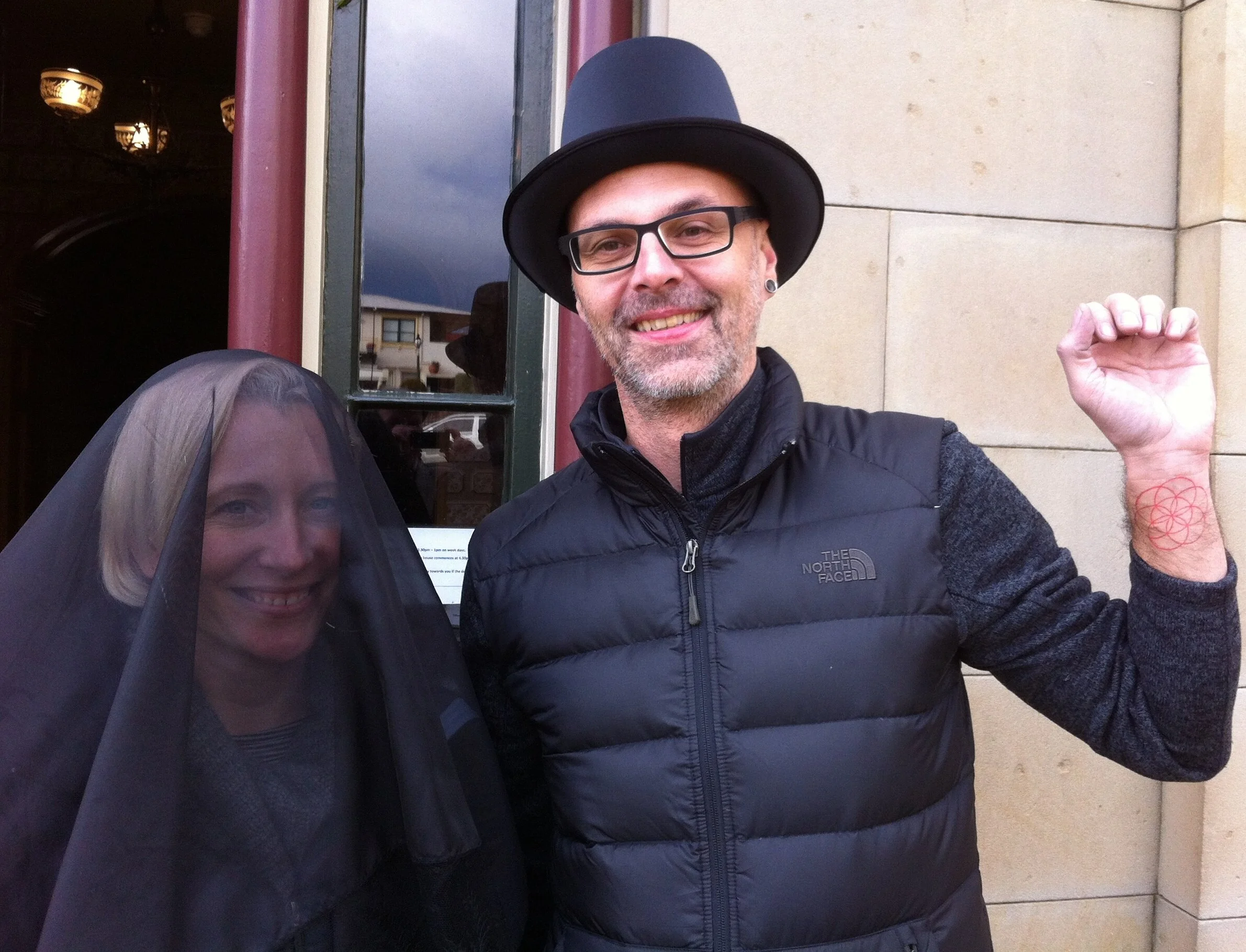
Hexafoil façade projection
Emigration from 19th century Britain to Tasmania saw inheritors of pre-Christian magical traditions making a new life on the other side of the globe. Believers in the ‘old ways’ concealed objects in the roof voids of their houses to guard against the entry of evil. Others carved talismanic symbols into their houses’ door and window surrounds to repel evil forces, sickness and death. Narryna explored this tradition as a façade projection, as part Dark MOFO, a Winter solstice festival with themes of silence and ritual. MOFO has a theme of illuminating Hobart buildings in red.
Hexafoils (or daisy wheels) are known from a number of Tasmanian sites. This hexafoil is from Shene at Pontville. It has been drawn with compasses and is the work of a mason or architect, such as Francis Butler, designer of Shene’s stables c. 1851. Narryna adapted another hexafoil – from Redlands at Plenty – as a hand stamp for visitors. was Narryna has the most basic of ritual markings – crosses etched into the brickwork either side of its door from the carriage drive.
These symbols, to quote Dr Ian Evans (Touching Magic, PhD thesis, University of Newcastle NSW, 2010),
‘ … occur in the same location patterns … at doorways or windows, on chimney breasts or in roof cavities. There an echo in the placement of the marks … [of] the god and goddess of the threshold … These were Janus, the two-faced god of entrances and beginnings, and Hecate who protected borders and crossroads. To the ancient Greeks and Romans these were places that possessed supernatural power and therefore required divine protection. Spirits hovered around these places because they were voids in the continuum – neither one place or the other …’
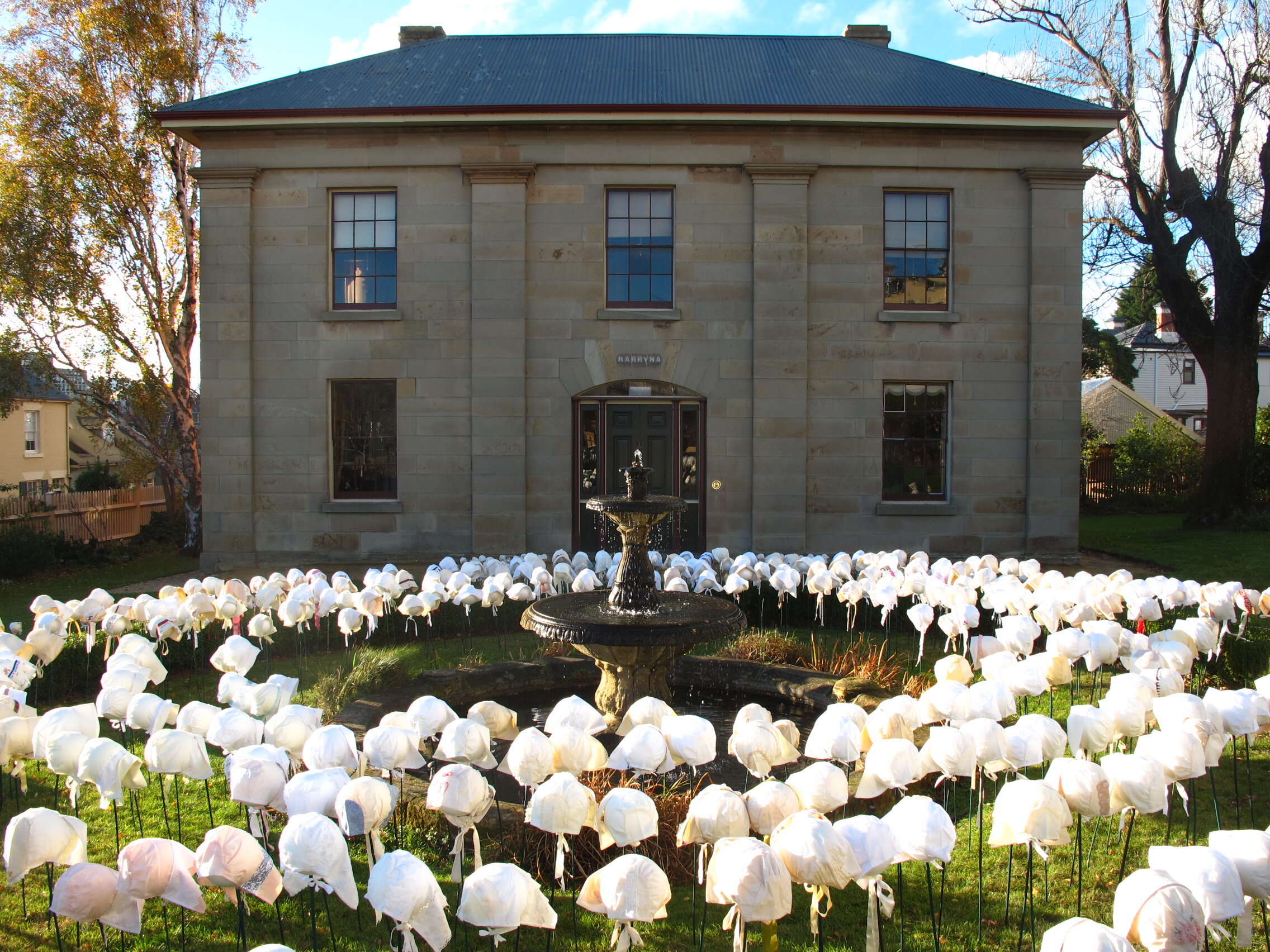
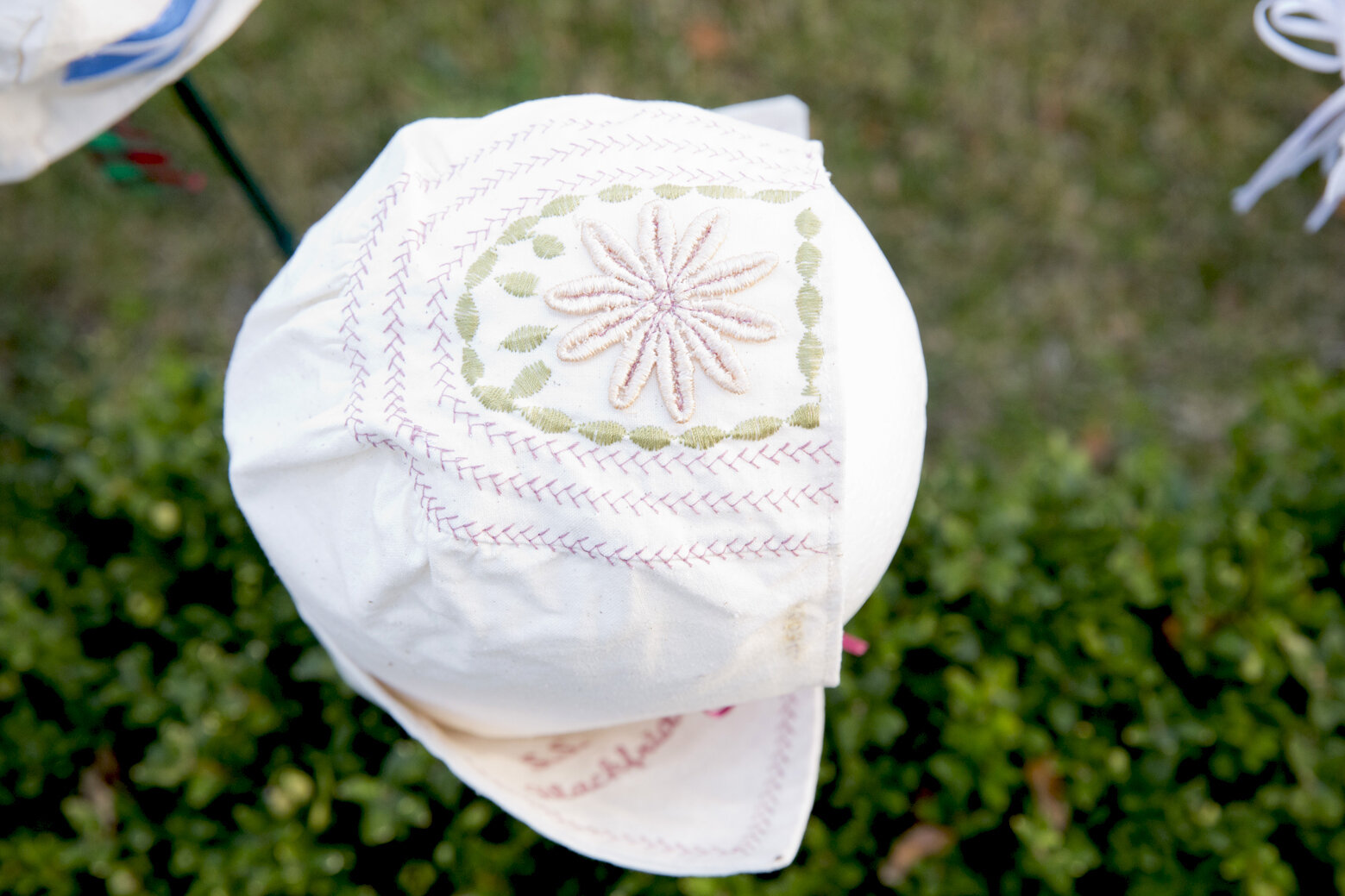
2016: Dr Christina Henri: Stripping the Veil of Amnesia
Stripping the Veil of Amnesia, Narryna’s 2016 Dark MOFO program, was a chapter of Dr Christina Henri’s Roses from the Heart journey. Dr Henri has engaged an international community to create a bonnet to memorialize each of the 25,566 women who came to Australia by ship as a convict. Narryna is the source of the 19th century bonnet design that has been replicated for this project.
Seemingly part of the worldwide ‘Occupy’ movement, Stripping the Veil of Amnesia was a bold installation of massed bonnets on the Narryna forecourt to reclaim Narryna as a convict site. The exhibition sought to reverse 150 years of Tasmania forgetting its convict past. A museum since the 1950s, Narryna was notoriously opposed to the presentation of convict history, preferring an elite free settler narrative. Convict women were assigned as servants either direct from the convict ships or the Cascades Female Factory to Narryna's builder, Captain Haig. Research has identified over 40 such women. Since 2016, Narryna has restored its servants’ quarters and convict work areas and the convict women’s story is an essential part of the museum’s narrative.
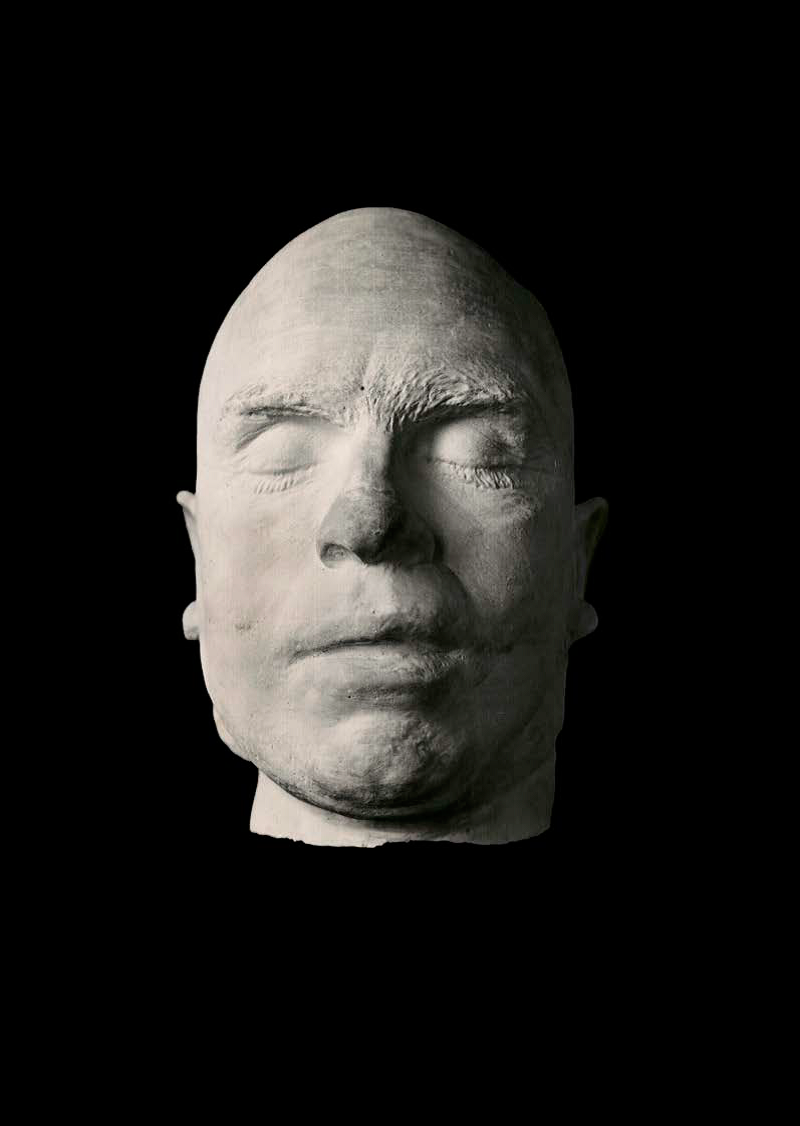
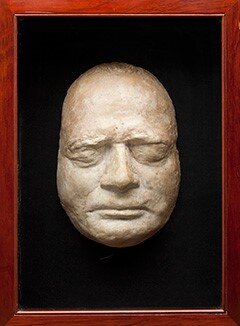

2017: Brigita Ozolins: Death Mask
Academic and installation artist, Dr Brigita Ozolins engaged with Tasmanian museum collections to present Death Mask for Dark MOFO 2017. Death Mask invited people to ‘Confront Tasmania’s convict history through death masks of executed criminals created according to the 19th century pseudoscience of phrenology, which sought to decipher an individual’s personality traits and criminal proclivities in the shape of their skull’. Ozolins is best known for her large-scale installations that explore the links between language, history and identity such as Kryptos (2011) at MONA.
Ozolins was inspired to develop her installation by photographs by John Watt Beattie of his Port Arthur Museum, Elizabeth Street, Hobart. Part of Beattie’s collection was later purchased by the Queen Victoria Museum and Art Gallery, Launceston. The death mask was created by taking a plaster mould of the face or head of the deceased and hair or eyebrow fragments have been noted embedded in the plaster of the few surviving Beattie collection death masks. Australia’s earliest surviving sculpted portrait is probably the life mask of the Rev. Robert Knopwood (1761-1838) made by Colonial Surgeon, Dr. James Scott and now in the Narryna collection.
In Australia the creation of death masks for phrenological analysis was an aspect of the race and class-based ideology that accompanied colonization. A judge could direct that the body of a criminal sentenced to death be dissected and anatomized after execution. In an era that looked to a physical resurrection at the Last Judgment, being denied burial, physically complete in consecrated ground was a violence beyond execution.
The ‘science’ of phrenology was developed in the late 18th century to determine personality types, intellect and human behaviour by examining the shape of the skull. In 1796 the Austrian physician, Franz Joseph Gall, noted that the brain is the organ of the mind and that brain areas have localized specific functions. His colleague, Johann Kaspar Spurzheim then mapped the skull as 35 individual ‘organs’ and linked each one with a specific physical, mental or moral 'faculty'. The area above the ears, for example, was designated as the zone of destructiveness. Gall and Spurzheim noted this area was prominent in violent men. Spurzheim believed that the first 19 of these 'faculties' existed in other animal species. This led to the identification of ‘regressive’ tendencies.
Phrenologists were trained the ‘read’ heads by feeling the contours of the skull. In the 19th century they were consulted like palm readers or astrologers. From the 1860s a distortion of Charles Darwin’s theories of evolution led to reliance on phrenology in determining an individual’s criminal proclivities.
Beattie’s collection contained standard phrenology types that were circulated to institutions and collectors and involved contrasting the crania of geniuses with criminals. Beattie’s collection included busts of Frederick the Great, King of Prussia (1712-1786) and British statesman, Lord Brougham (1778 – 1868) and the death mask of Marcus Clarke (1846-1881), author of For the Term of His Natural Life (1870-74). Death masks of executed criminals included murderers: John Knatchbull, executed at Darlinghurst Gaol, Sydney in 1844; Richard Copping who murdered his lover and first cousin, Susannah Stacey, at Bream Creek, Tasmania in 1878; Henry Morgan executed at Ararat Goal, 1884 and the poisoner, Martha Needle (1863-1894). Melbourne Gaol appears to have created multiple death masks from its executed criminals.
After World War II a horror of eugenics that had led to the Holocaust led to the destruction of death masks. The belief that physical appearance and inherited character traits could explain and predict criminal behaviour lost ground in the 20th century. The new social science of criminology and further developments in psychiatry led to criminal behaviour being assessed in terms of upbringing, social background and the mental health of the individual.

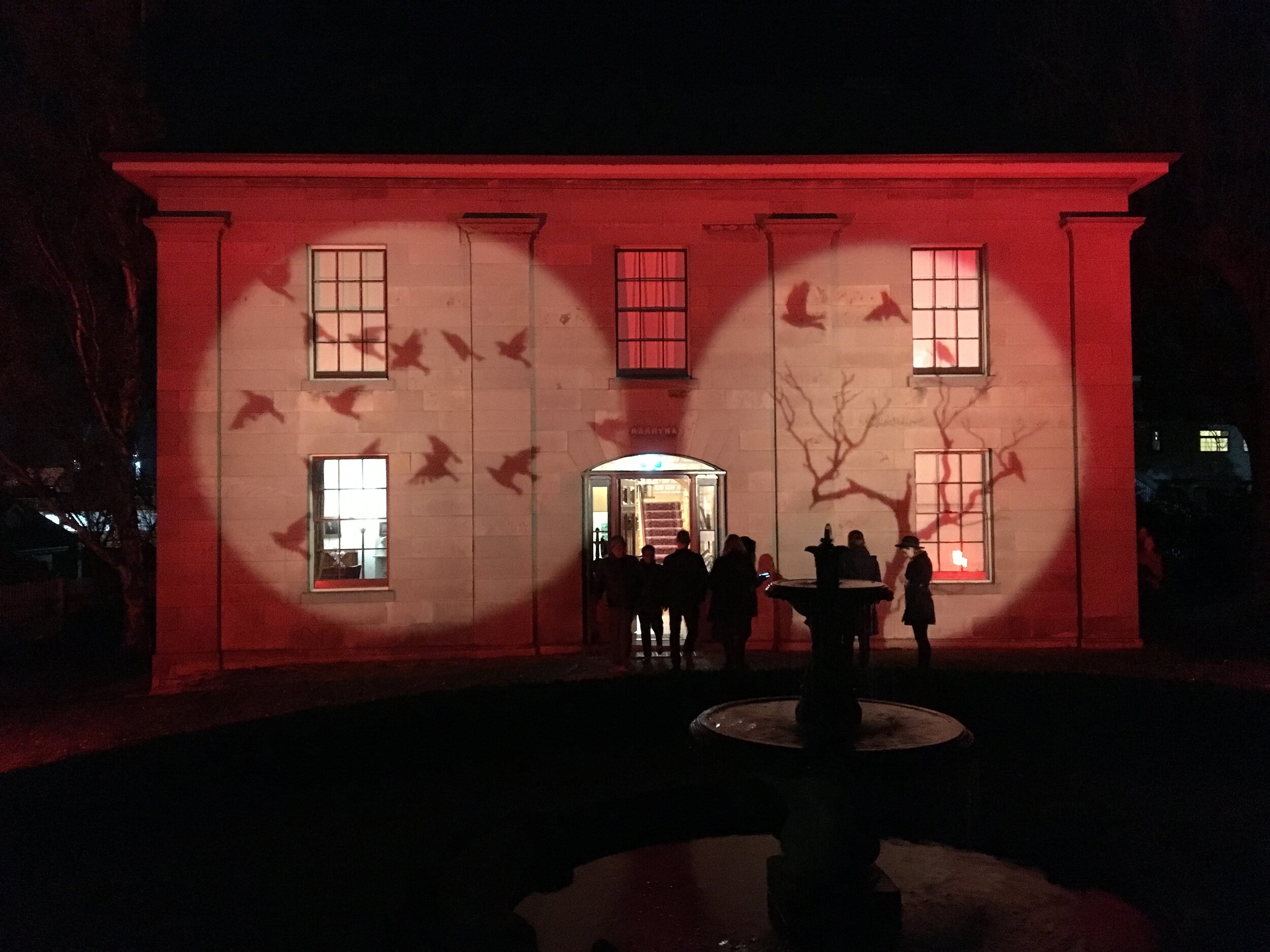
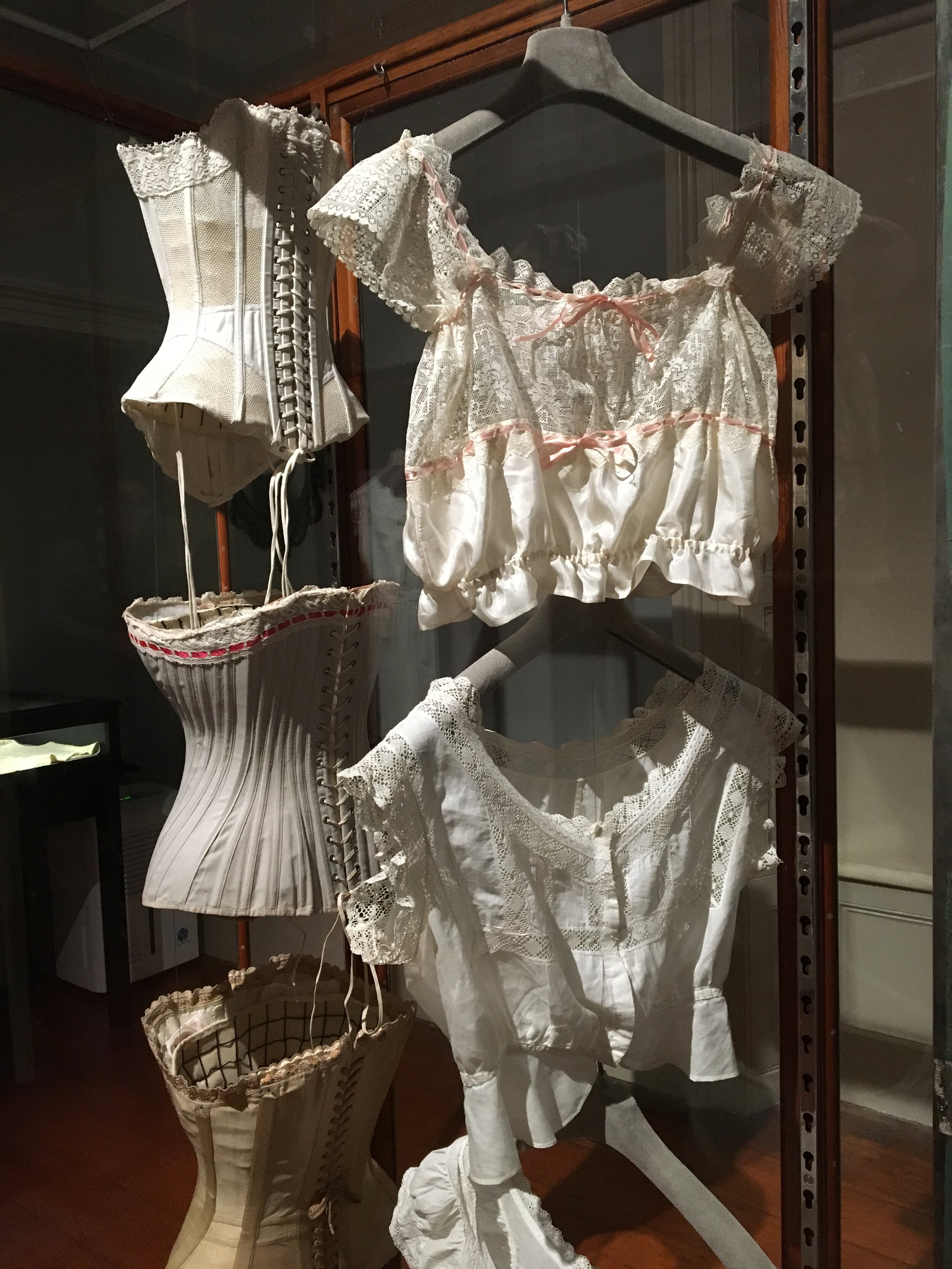
2018: Dr Mary Scott: Within These Walls
Artist and academic, Dr Mary Scott partnered with Narryna for a Dark MOFO 2018 installation work and façade projection, Within These Walls.
‘The smooth folds of her dress concealed a tumultuous heart’ – Gustave Flaubert, Madame Bovary
The middle-class Victorian wife, tightly constrained by corset and crinoline, is the keeper of the domestic altar. Mary Scott created an enigmatic collage of image, sound and text that intimates the desires, prohibitions and transgression that lurk within the familiar acts of daily life.
An intense melancholy pervades an upstairs bedroom at Narryna in which time seems to have stopped. In the dim light a lone woman longs for escape while her dreams spool tantalisingly beneath her. A soundscape captures the turmoil of her innermost passions. From the bare branches of an old tree the distorted cries of birds permeate the interior and summon passers-by to her rescue.
The installation was supported by an exhibition of nineteenth century girls’ and women’s apparel drawn from Narryna’s collection. Undergarments such as bodices, drawers, chemises, corsets, crinolines and bustles are fashioned with buttons, ribbons and fastenings and moulded by horse-hair padding, whalebone struts, steel hoops, wire mesh and firm stitching. They defined pinched-in waists, drooping shoulders and sharply-defined silhouettes and the promise of feminine elegance, beauty and fecundity. Constriction underpinned restriction, impaired health and opportunity. Female bodies are conflict zones, battle grounds between private and public, intimate and formal, symbolic and blatant lie.
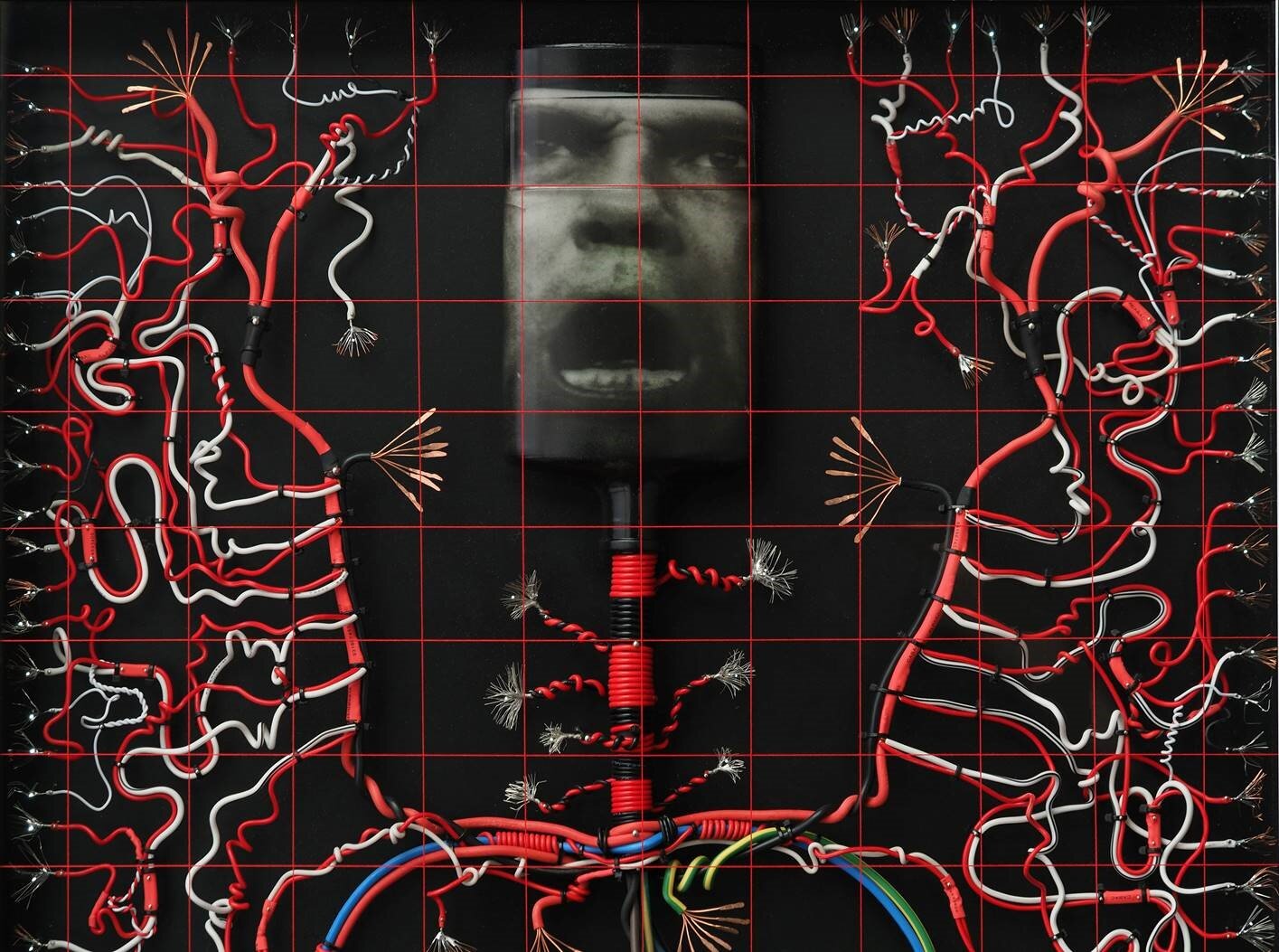
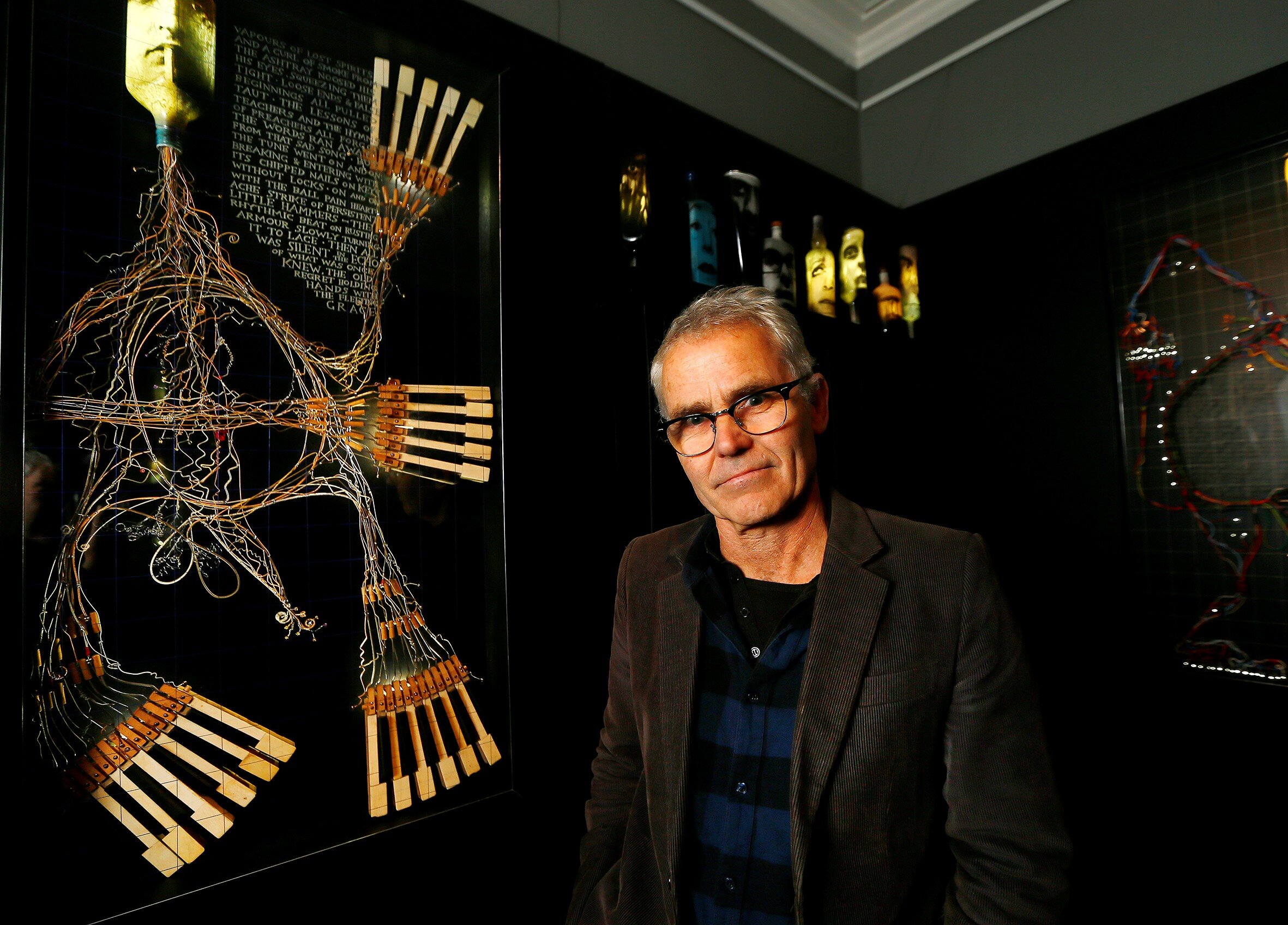
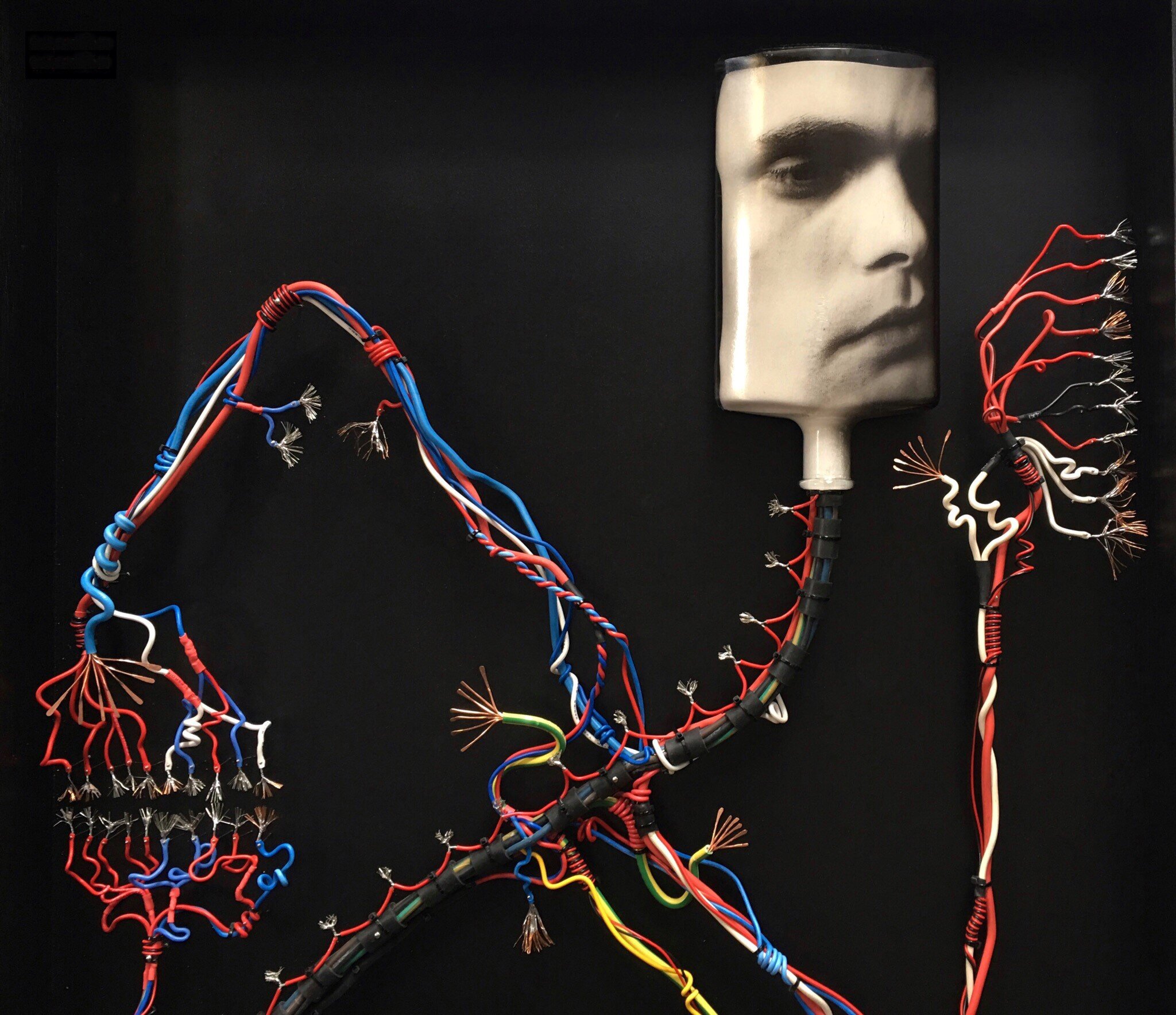
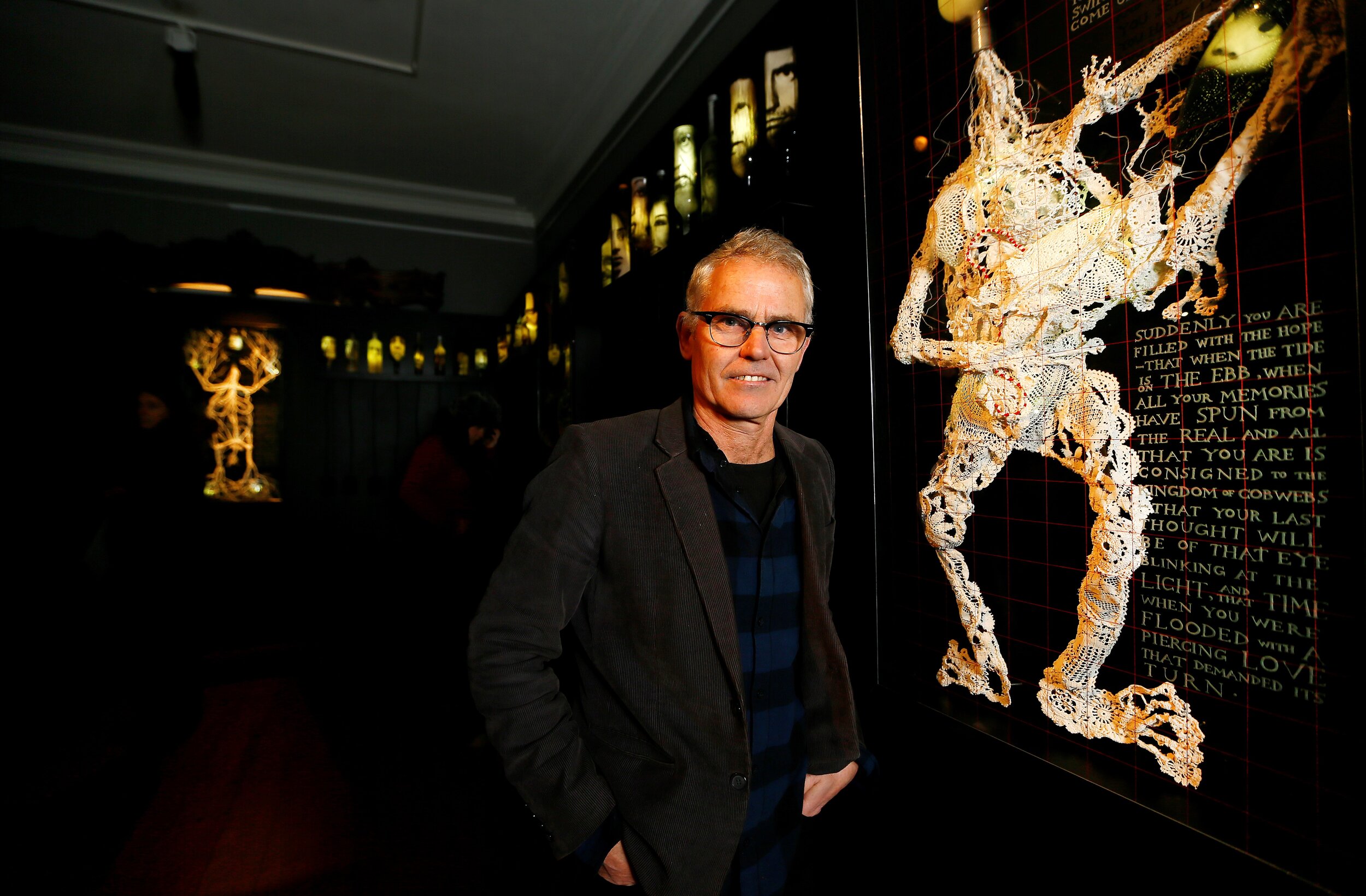
2019: Patrick Hall: If They Should Accidentally Fall
For Dark MOFO 2019 Narryna hosted Patrick Hall’s installation, If They Should Accidentally Fall.
Patrick Hall is one of Tasmania’s most unique visual artists. The sculptural installation, ‘If They Should Accidentally Fall’, is constructed by individual components, capturing figures built from recycled materials (electric cabling, bone, feather, lace and other materials), LED lights and spirit bottles. Overlaid with narrative text, suggestive of a devotional script or parable, Patrick creates a place of intimate confession to explore the passing of time and the slow erosion of belief.
“If They Should Accidentally Fall seeks to create a secular, sacred space where fragile vessels spill secrets, longings and desires. It is a place where confessions are made and shared, where voices seep and search for solace. A place where we can bear witness to our own human frailty” – Patrick Hall, 2019
‘His concerns are dark, interior, often melancholy, yet leavened by a great love of people they always seem somehow uplifting.’ - Richard Flanagan, writer.
If They Should Accidentally Fall was subsequently part of Sydney Contemporary in September 2019.


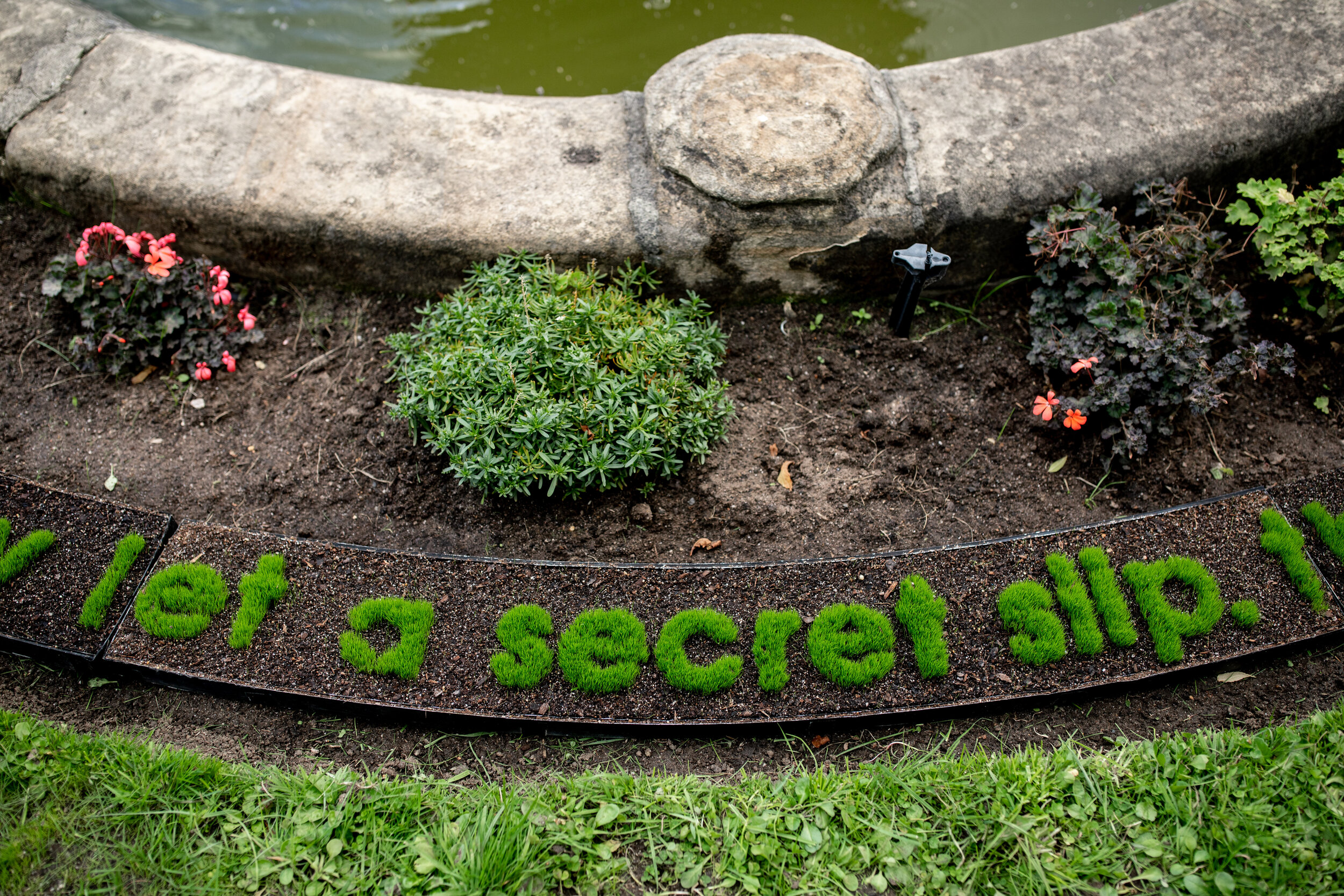
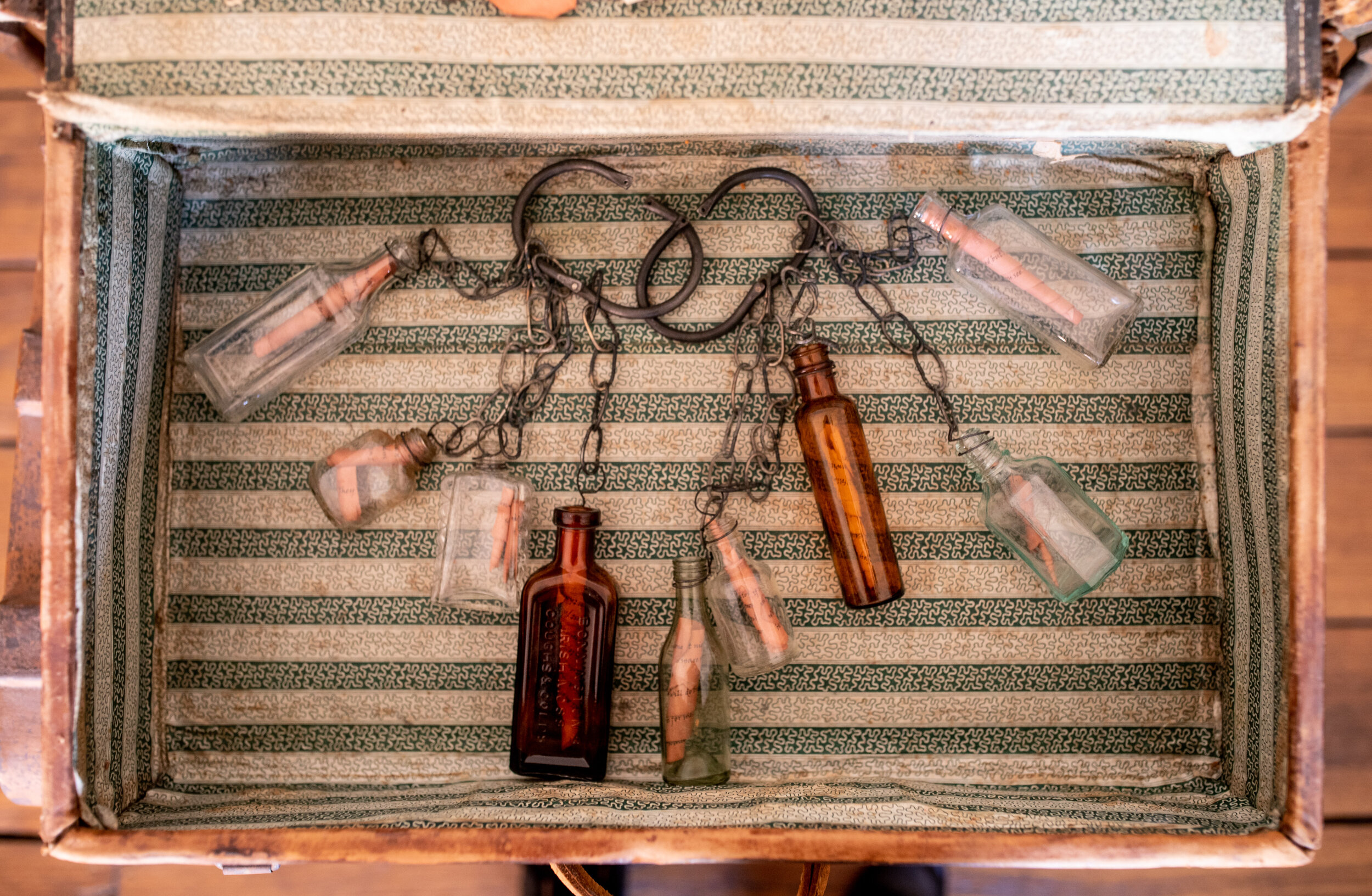
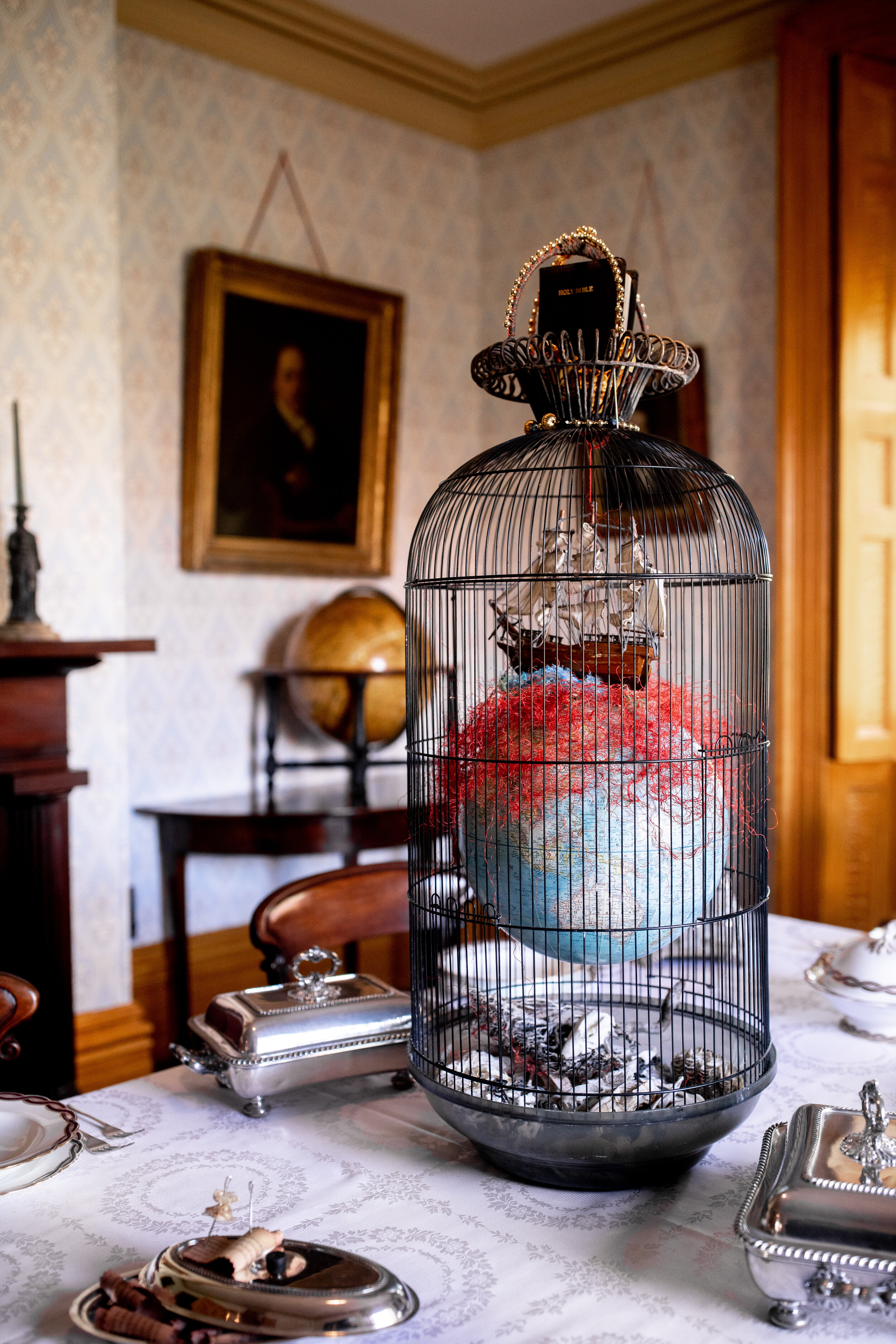

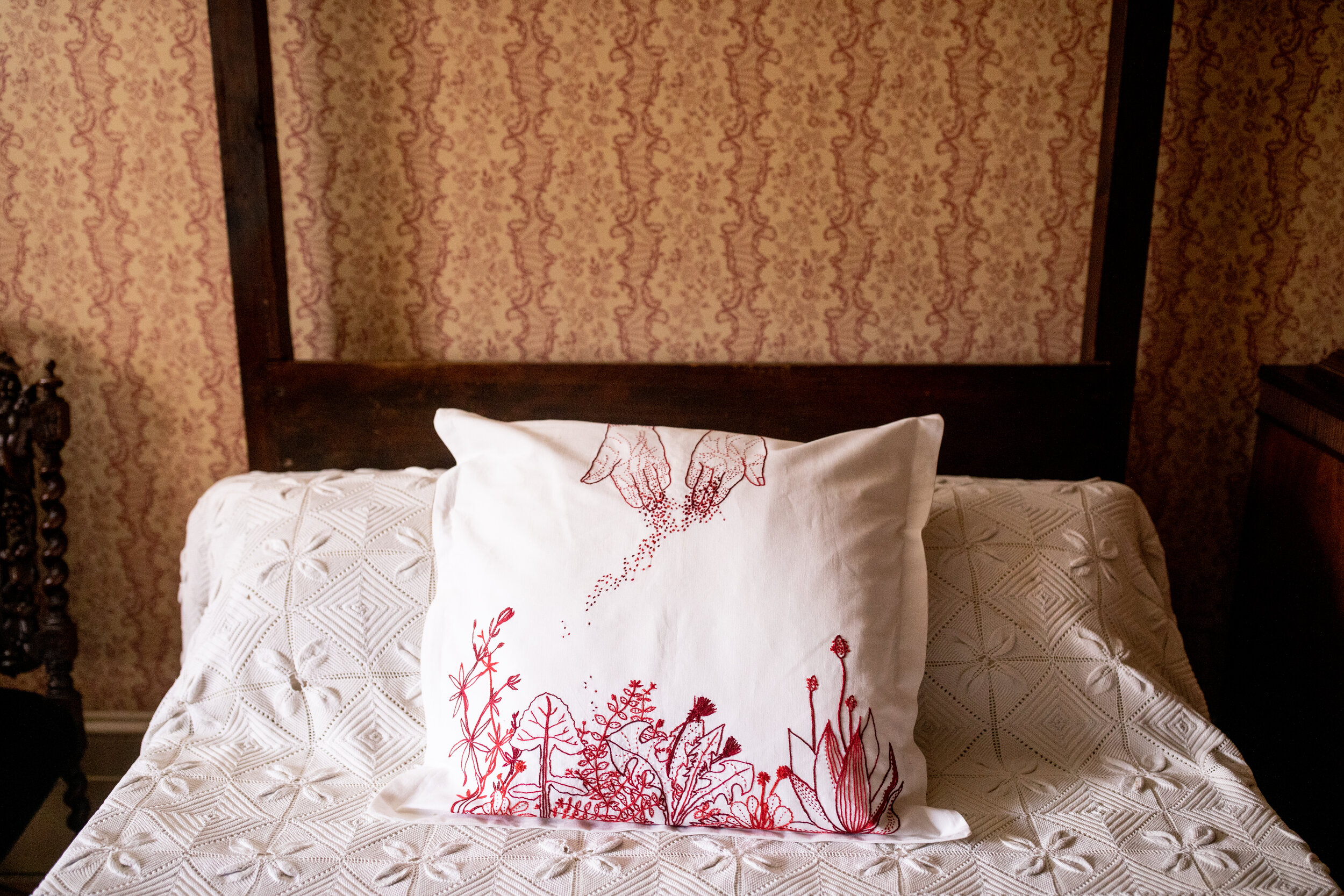

2020 Hidden Histories
Opening on the eve of the March 2020 COVID lockdown, Hidden Histories, a series of site-specific installations by nine women artists explored Narryna as a place of women’s history. It is guest curated by Dr Llewellyn Negrin. Participating artists are: Frances Watson, Janine Combes, Jane Slade, Julie Payne, Christl Berg, Irene Briant, Denise Rathbone, Chantal Delrue and Janelle Mendham. Explore the exhibition online at http://www.narryna.com.au/online-exhibitions
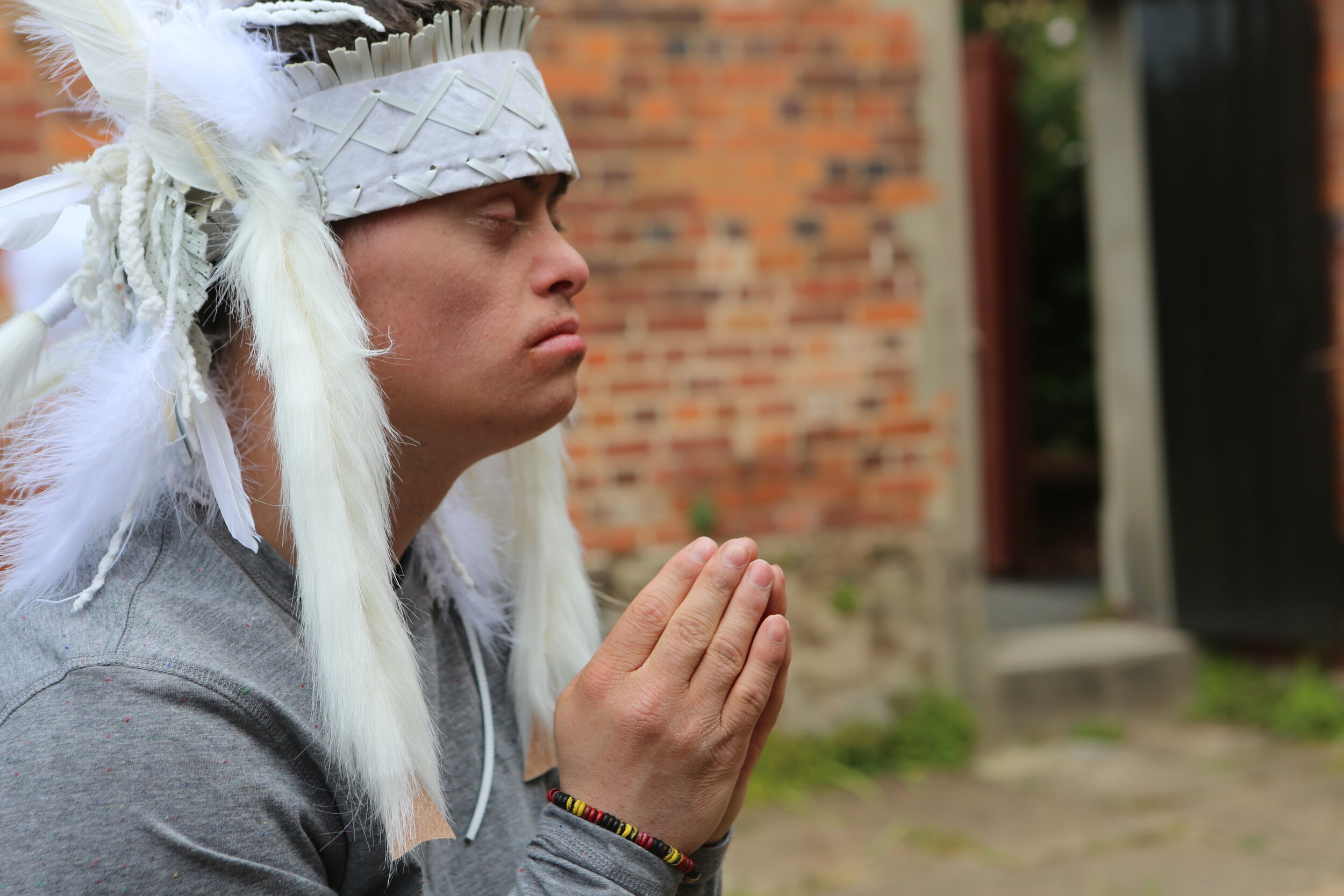
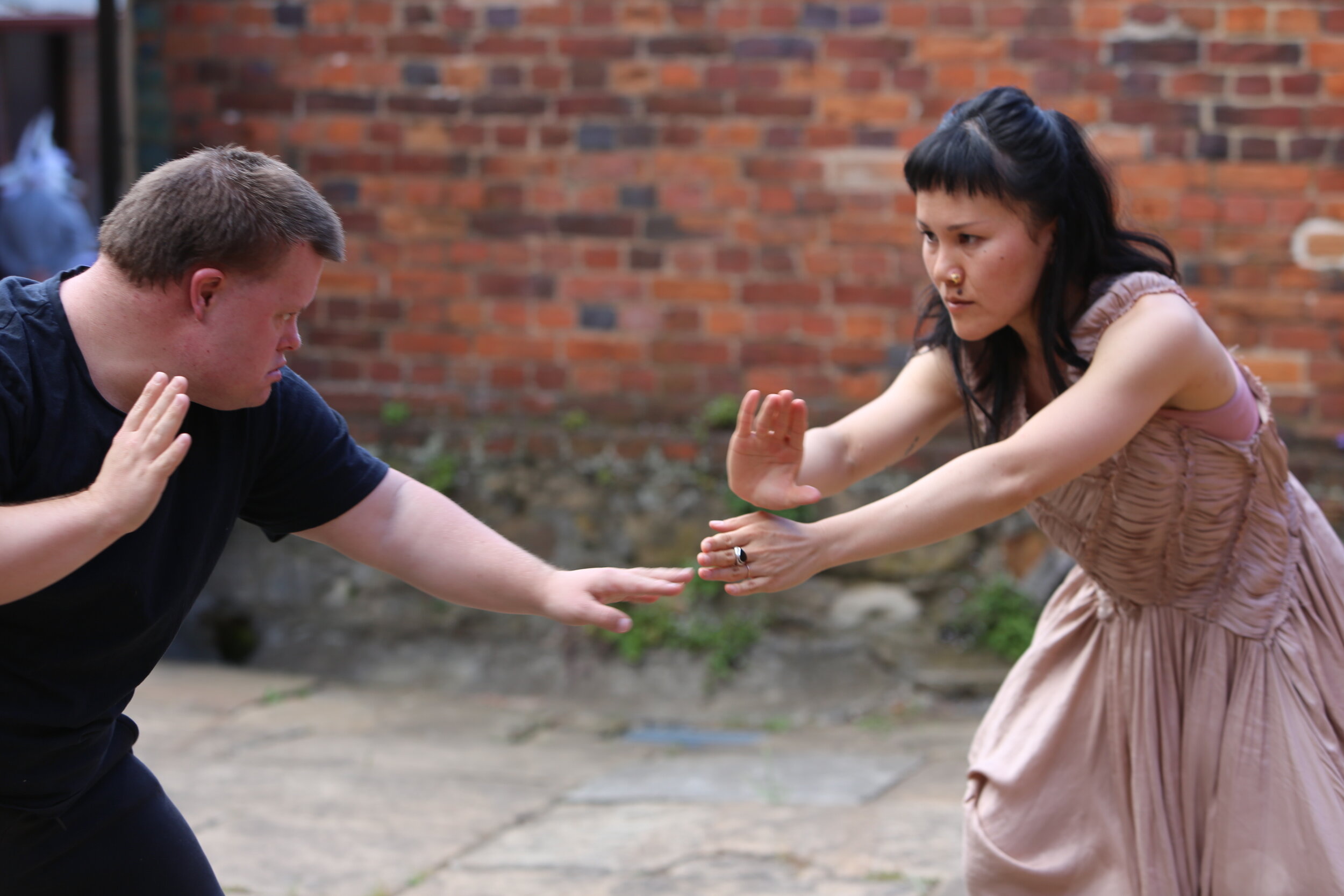
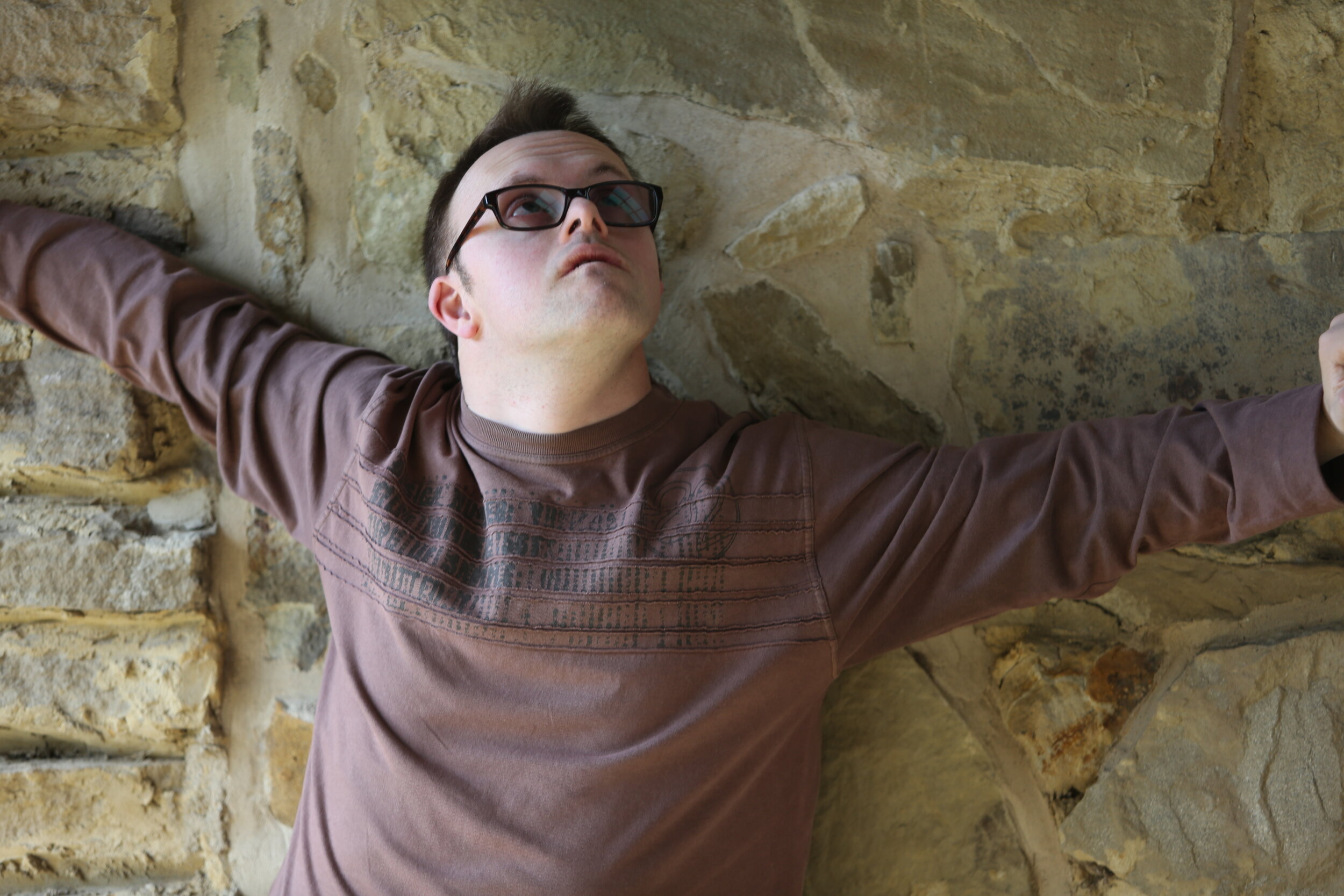
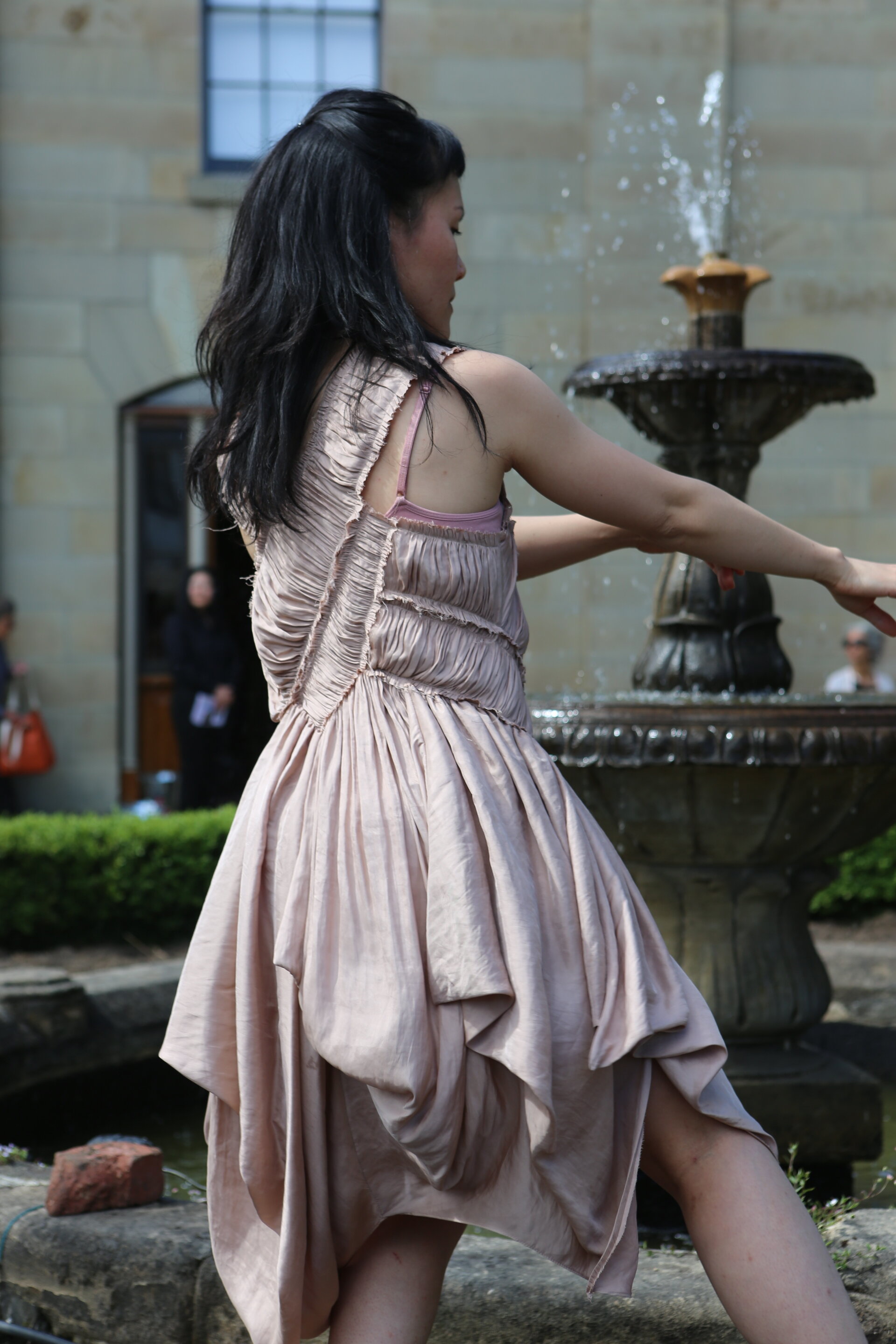
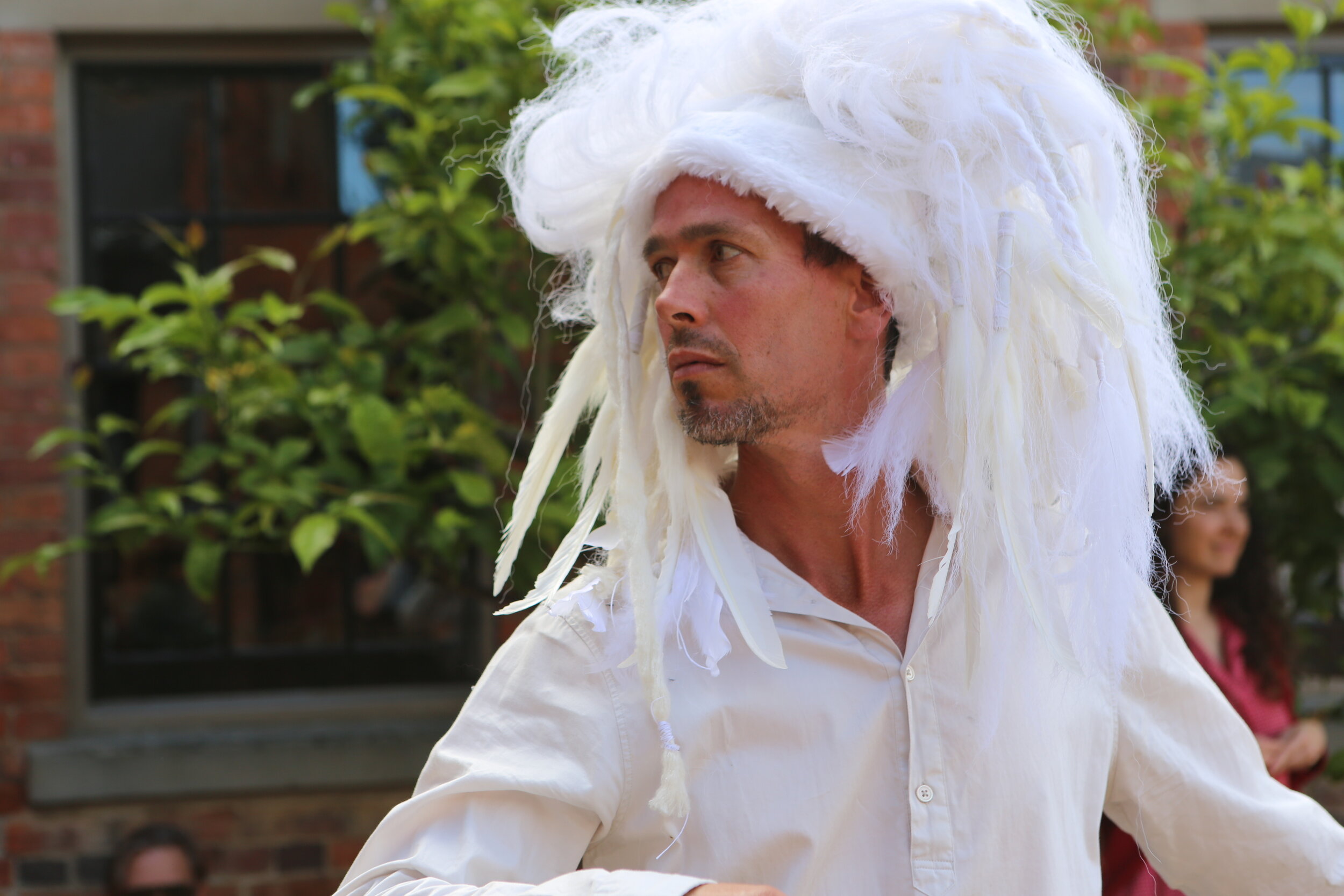

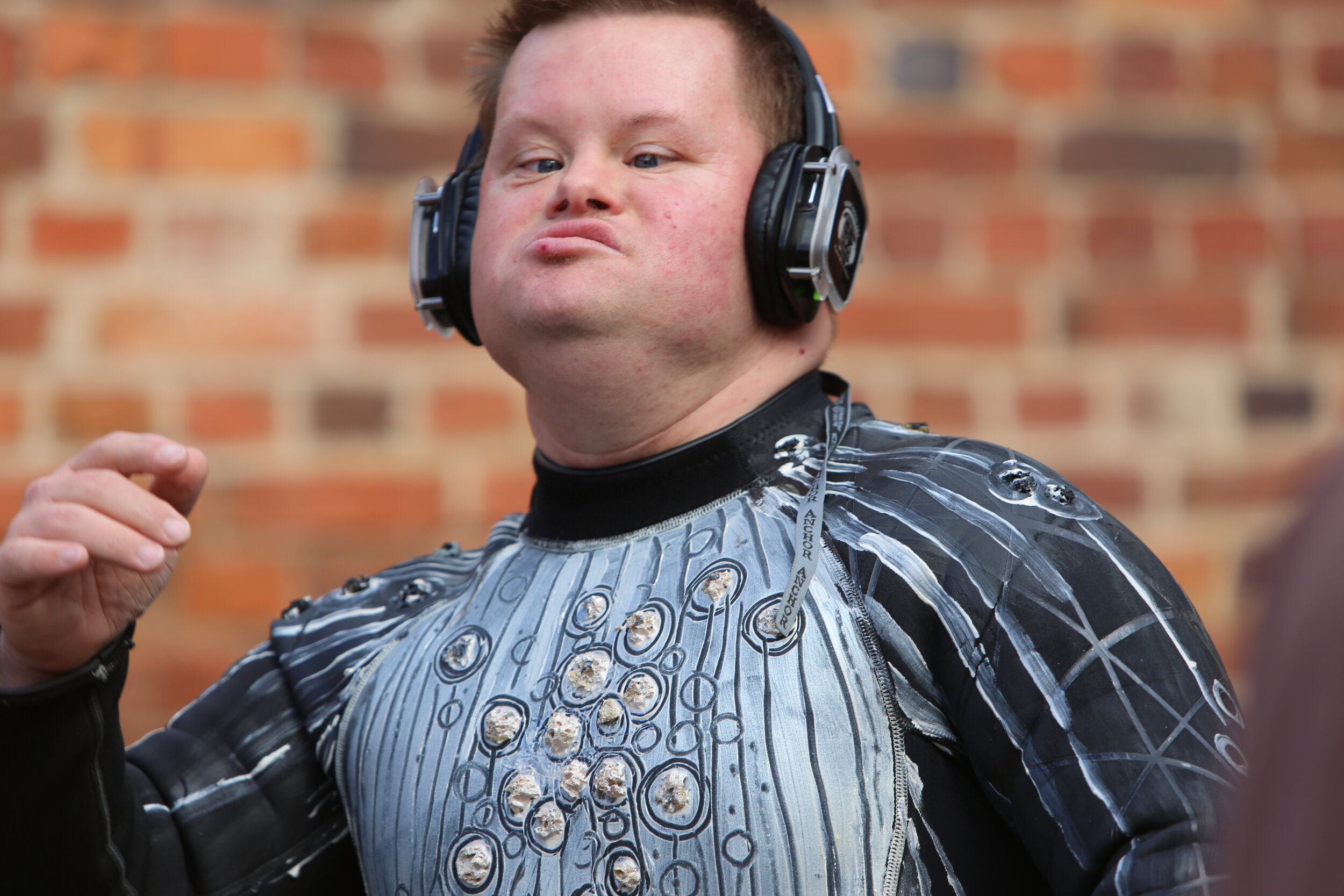
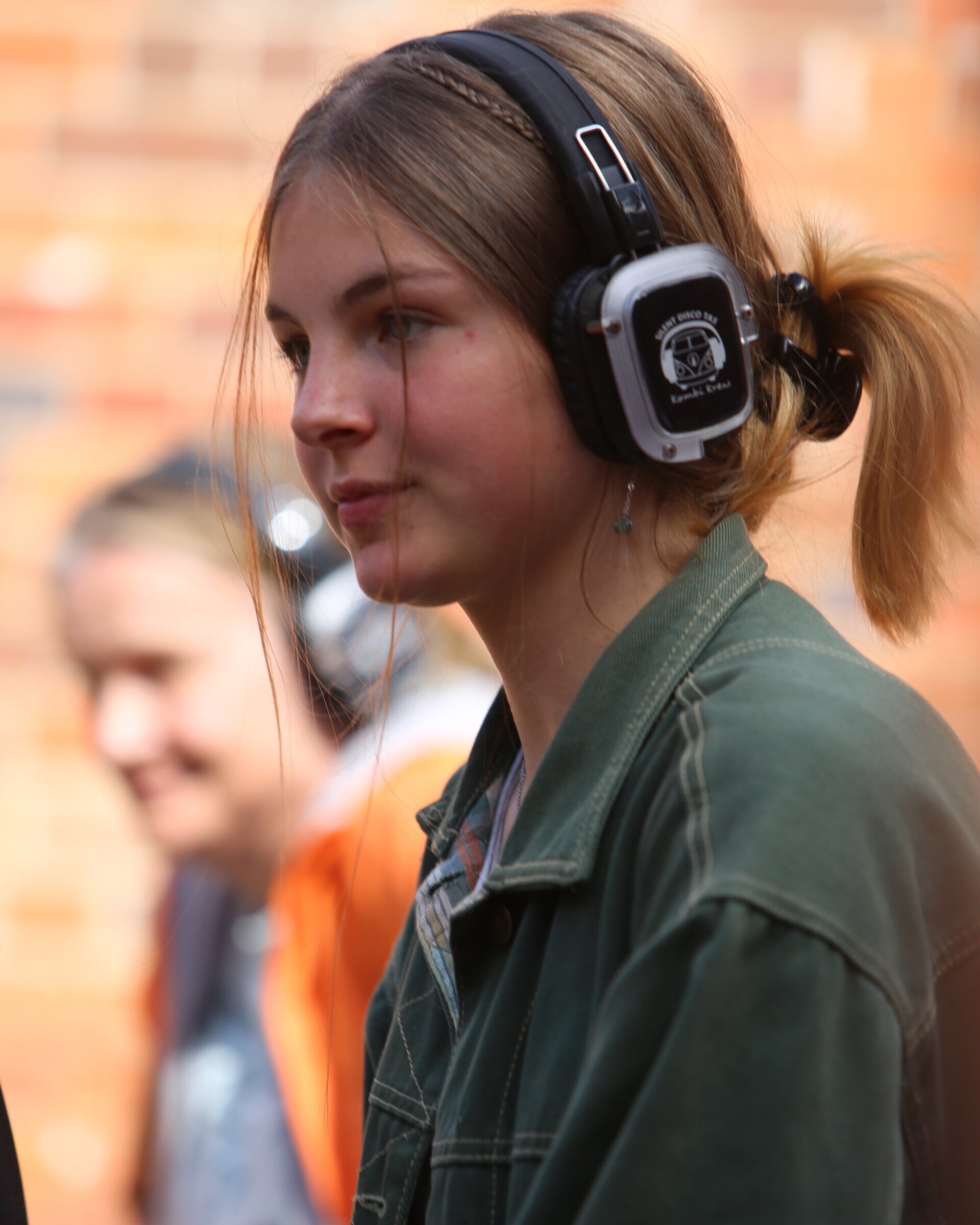
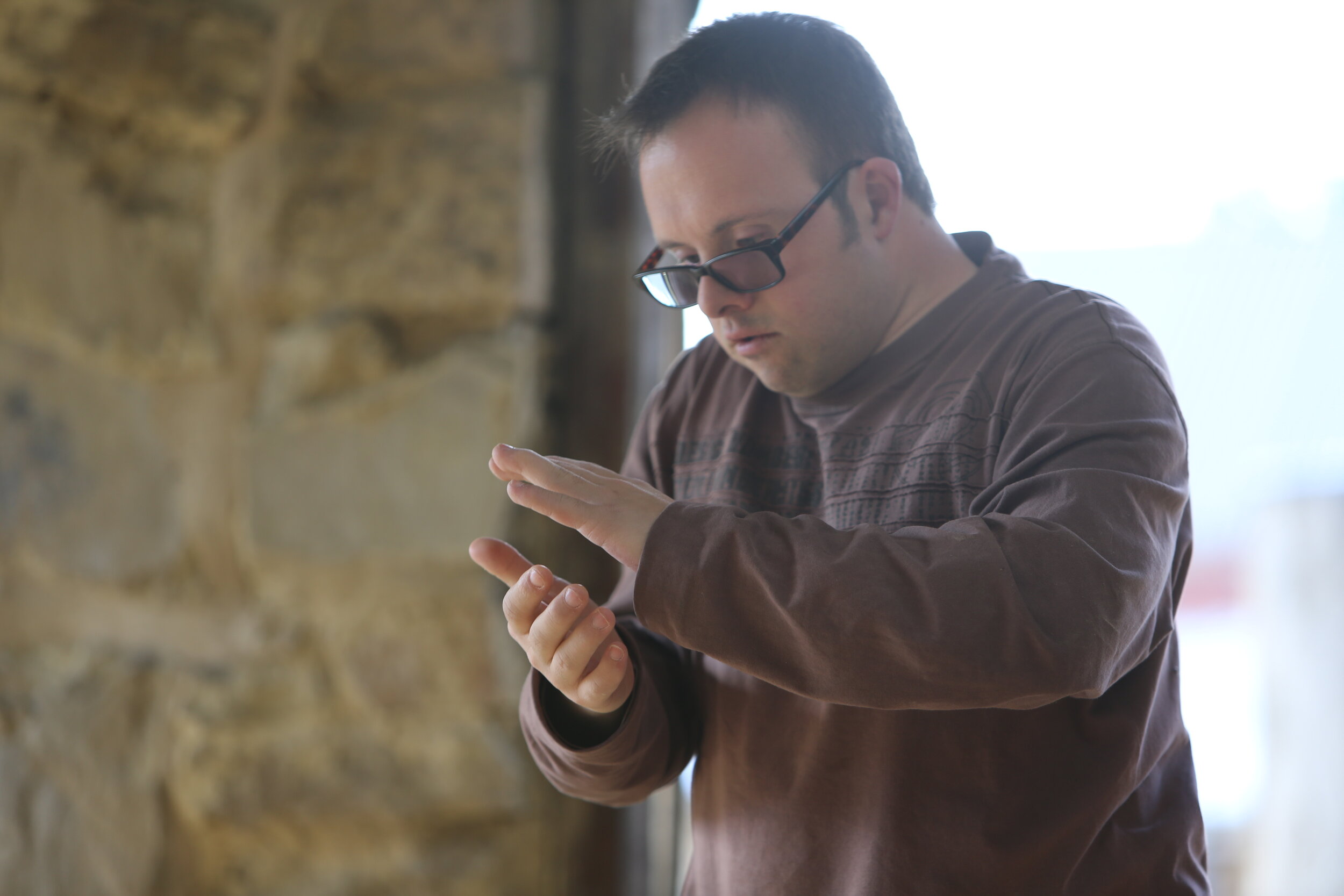
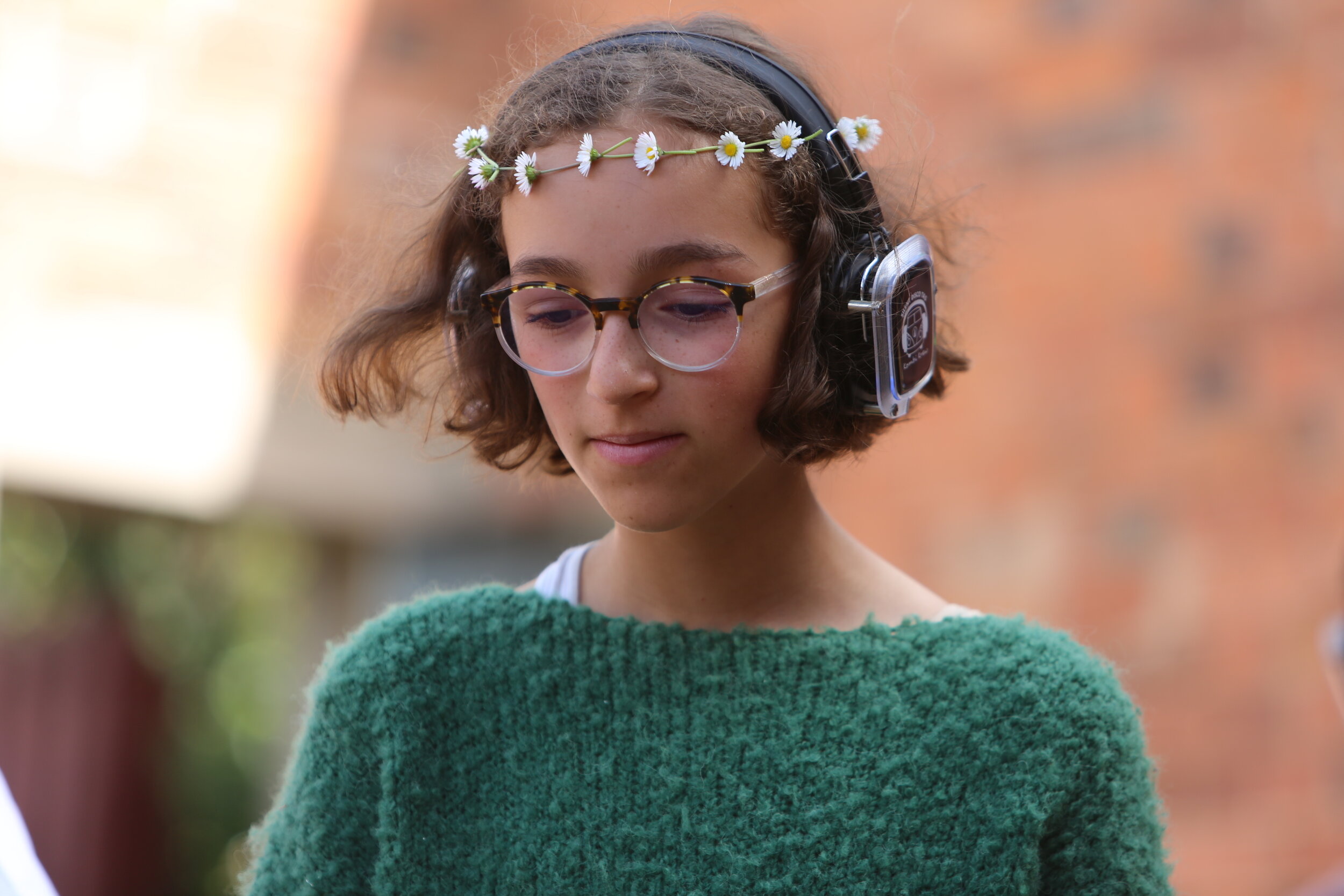

2020 An afternoon at the museum
The Second Echo Ensemble performed at Narryna on 28 November 2020 as part of the Burning Desire festival. An Afternoon at the Museum combined dance, theatre and music in a performance that unfolded across the site, taking its wrapt audience to new vantage points.
At the heart of Second Echo are the artists who make and perform the work. Some live with disabilities and some do not. Second Echo’s work is not simply about access or equality. It is about new ways of thinking and creating. Formed in 2005 the company has premiered twelve major works, toured in Australia and internationally and is a leading creative force in the development of a narrative that speaks to the rich diversity of Tasmania.

